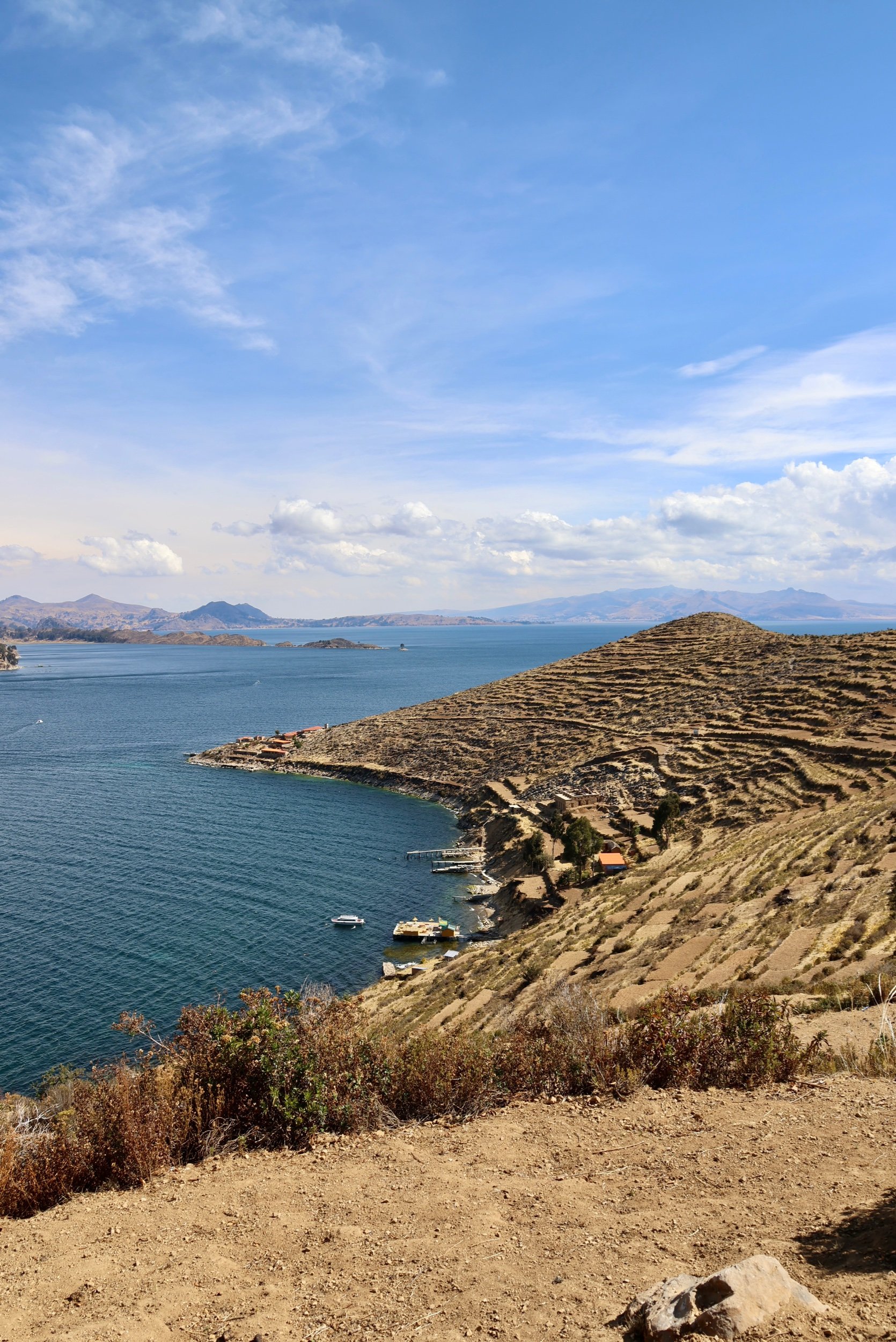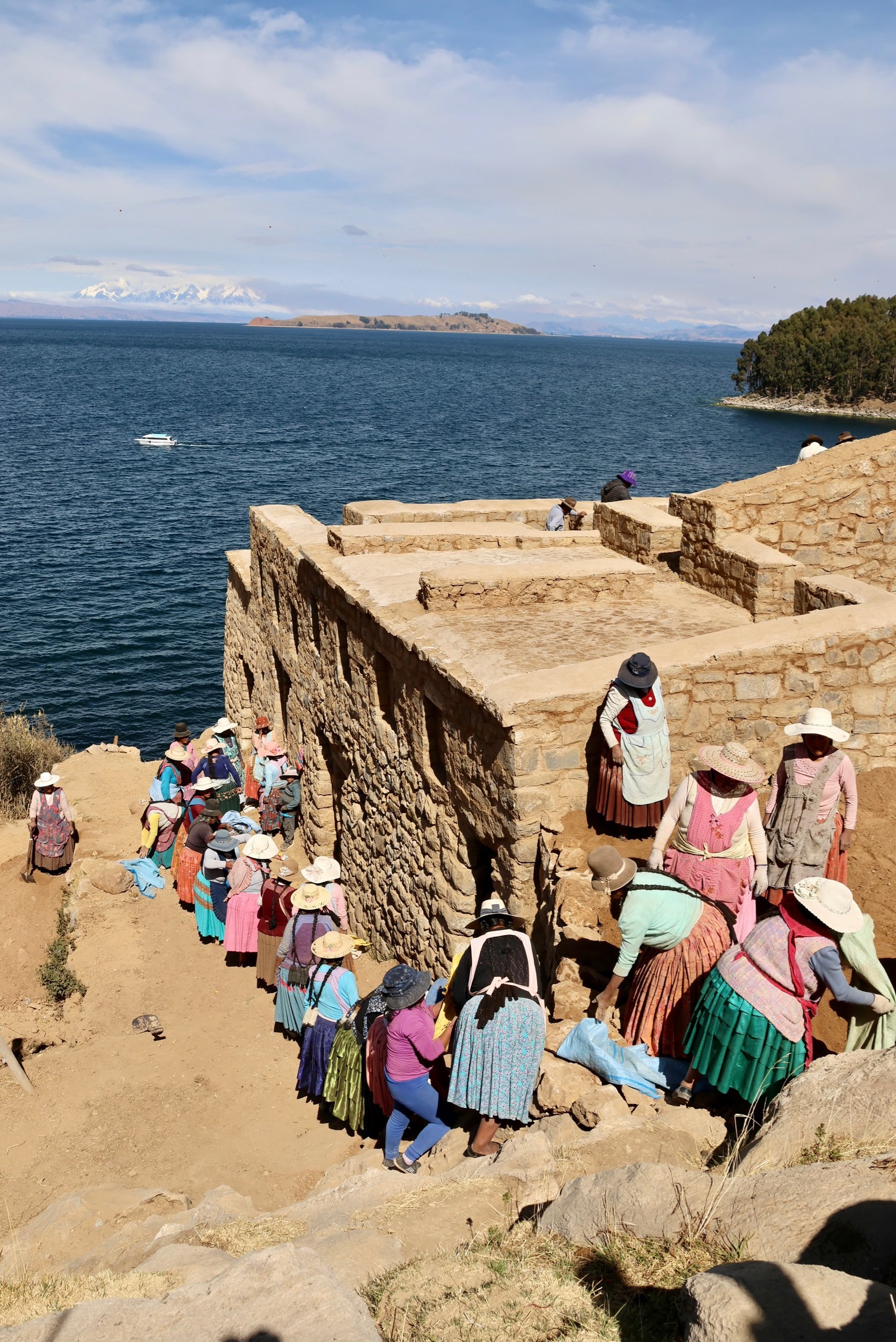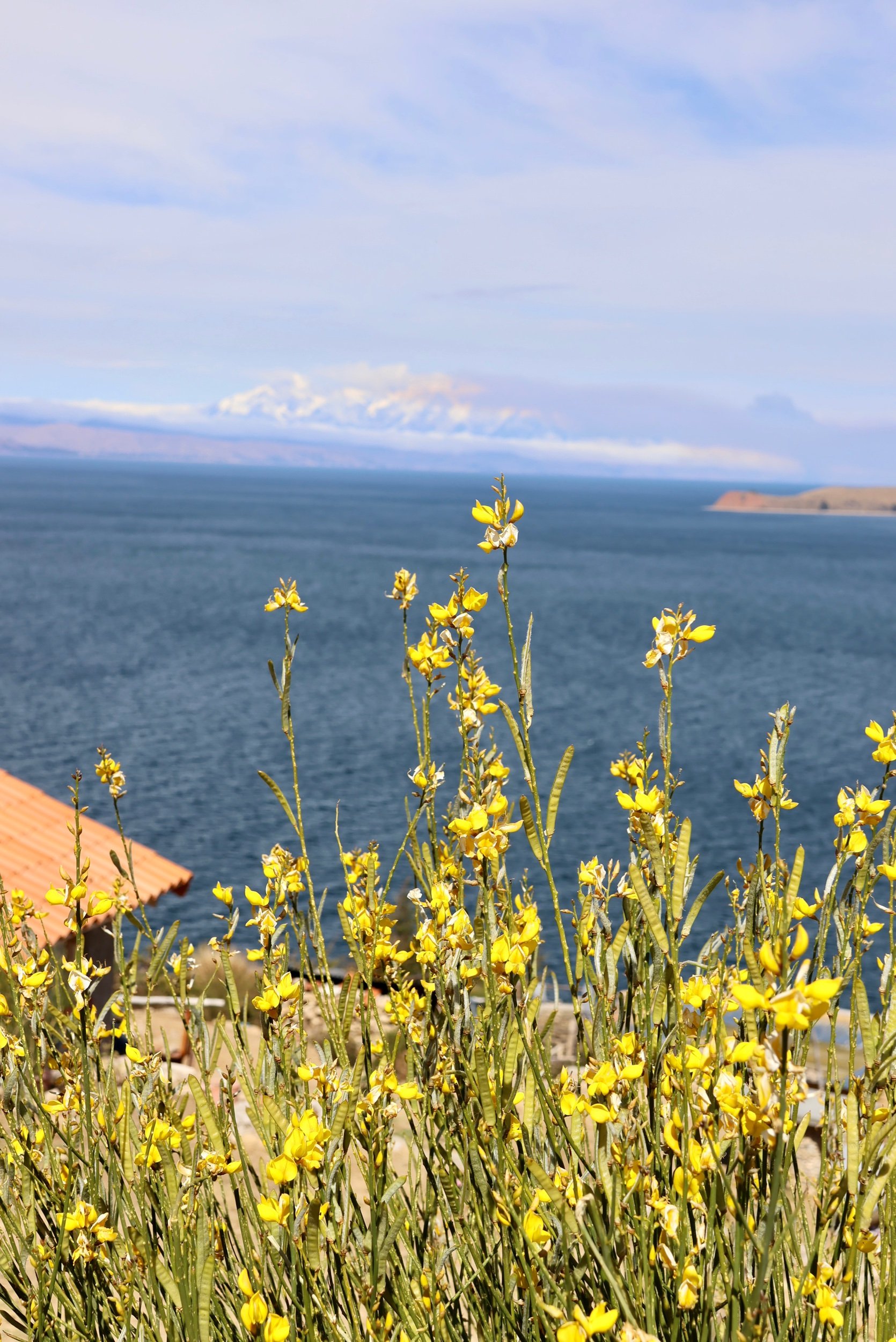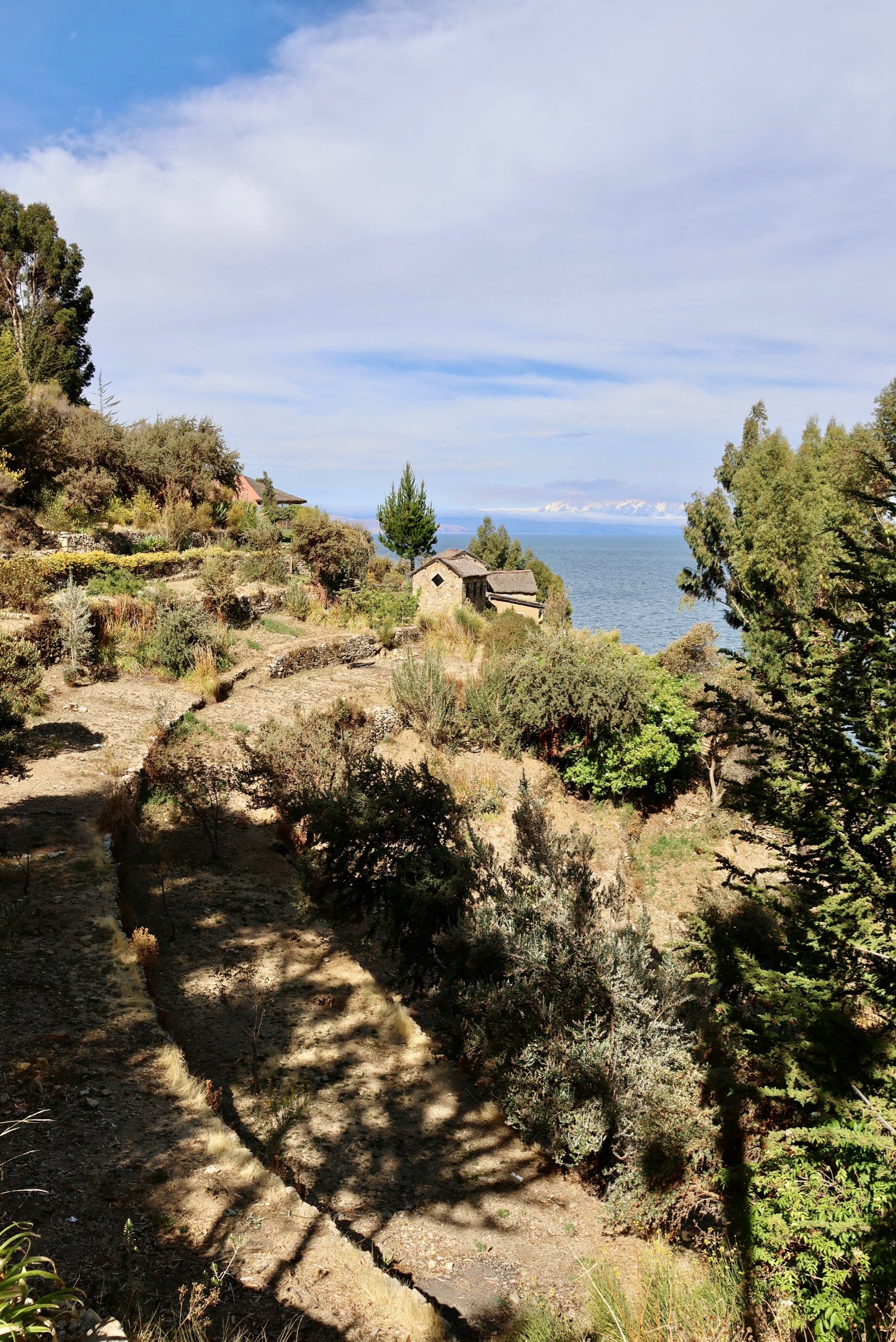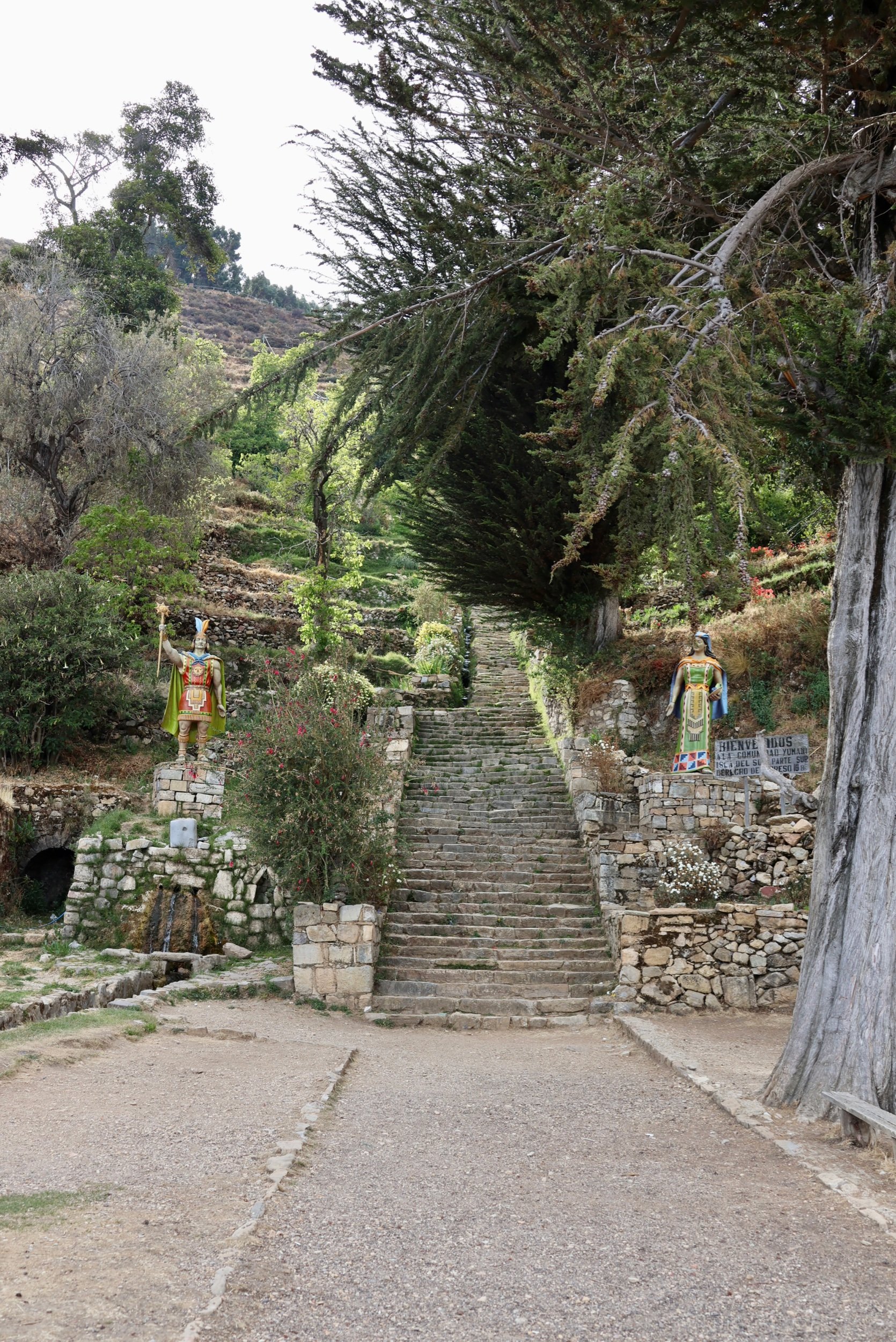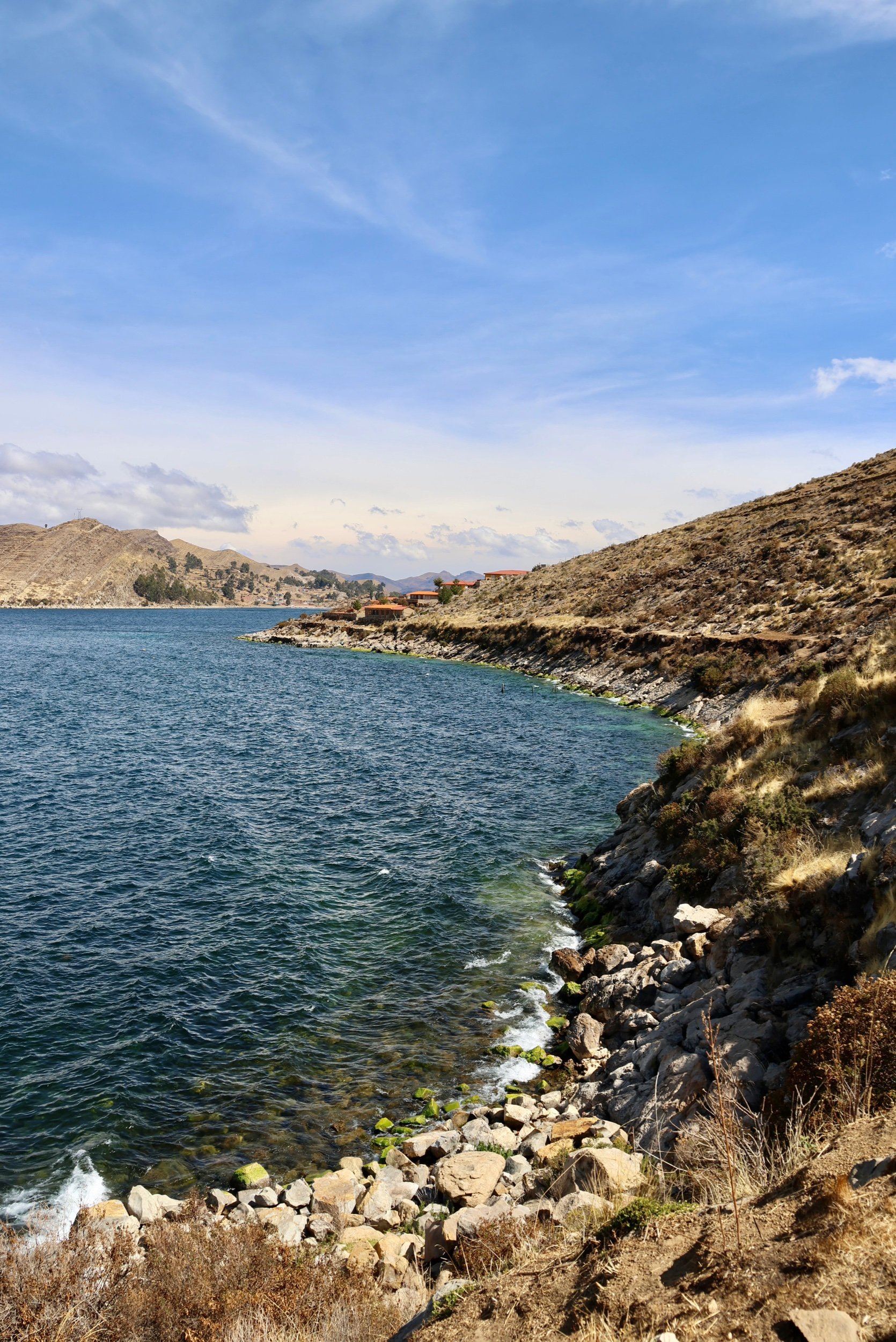Lake Titicaca, Peru & Bolivia
Lake Titicaca is the highest “navigable” lake in the world; we never really got a clear definition of exactly what that means but basically it is a huge lake that is 12,500ft above sea level! We were lucky enough to find a place to stay on the lake itself on floating reed islands! We were able to learn about the history of the lake and the people who inhabit these islands, how they build and maintain the islands, and how the inhabitants exchanged goods and cultures through the ages.
But first, we had to get to Lake Titicaca from Arequipa. We had to catch the 5:15am Peru Hop bus to Puno, the largest city on the lakeshore. We learned that we had to transfer to another bus actually heading to Puno as this bus was going straight to Cusco. The “transfer” was a drop off on the side of the highway where the 8 of us going to Puno had to get in a van and drive the last hour and a half. However, the van got stuck trying to get out of the gravel lot because there were too many of us. We had to jack it up and put rocks under the tires for it to make it out. We were not enthused about the rest of the journey.
We got to Puno, which was a pretty small and plain city, so we got lunch and waited to get picked up by a taxi to head to our floating island hotel, Andean Titicaca Lodge! We met Ruben, the owner, at the lake’s shore and got in his boat. We rode about 25 minutes to the Uros islands where locals still live and many hotels now exist for tourists to stay on the lake. The islands were made of layers and layers of reeds that grow in the lake. And by layers I mean the islands were clearing the waterline by about 4-5 feet. When you got off the boat you were literally just walking on folded down reeds, there were no paths or boardwalks or anything. Ruben owned an island with his brother and sister and each had about 2-3 huts that they managed. Ours had a king bed and a sliding glass door that overlooked the lake and had a great view of sunset over the mountains. We napped and then enjoyed our view until dinner which was prepared by Ruben’s wife; fresh lake trout! The islands are powered by solar panels which was really cool but also meant there was no power at night and definitely meant there was no heating. Apparently a large lake at 12,500ft of elevation gets pretty cold at night! Luckily our bed had 6 layers of heavy blankets so we snuggled in for the night and went to bed pretty early.
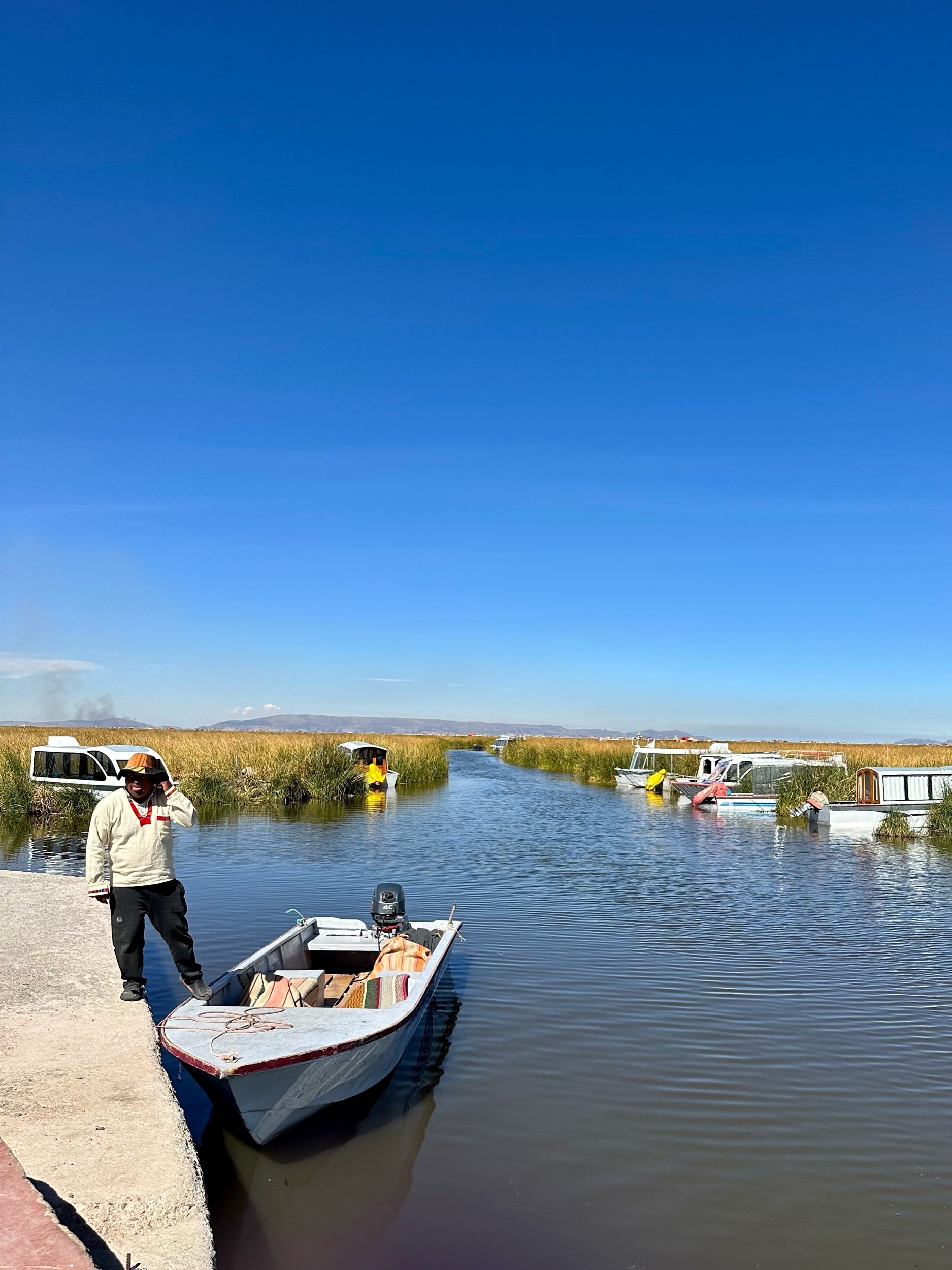
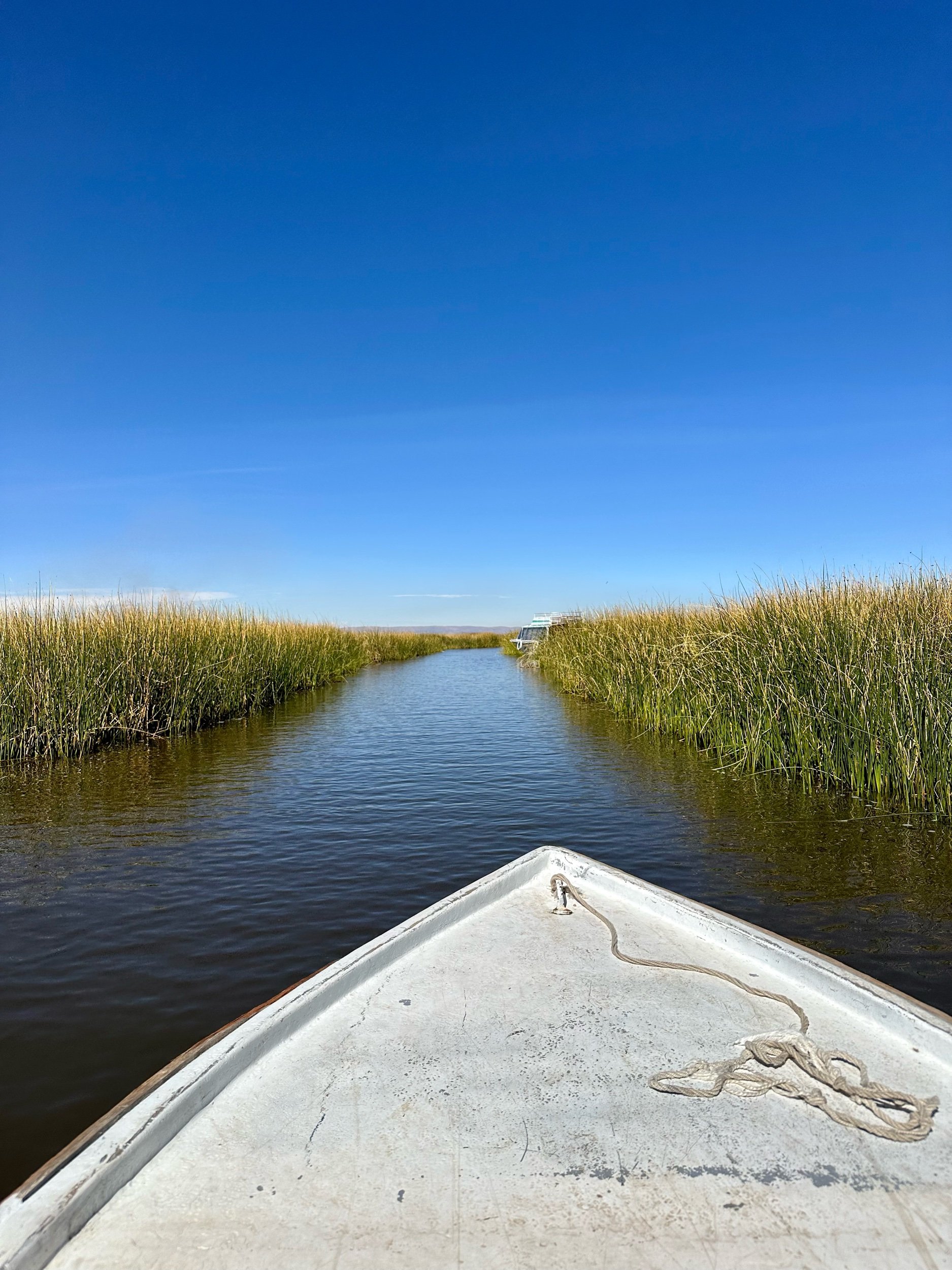
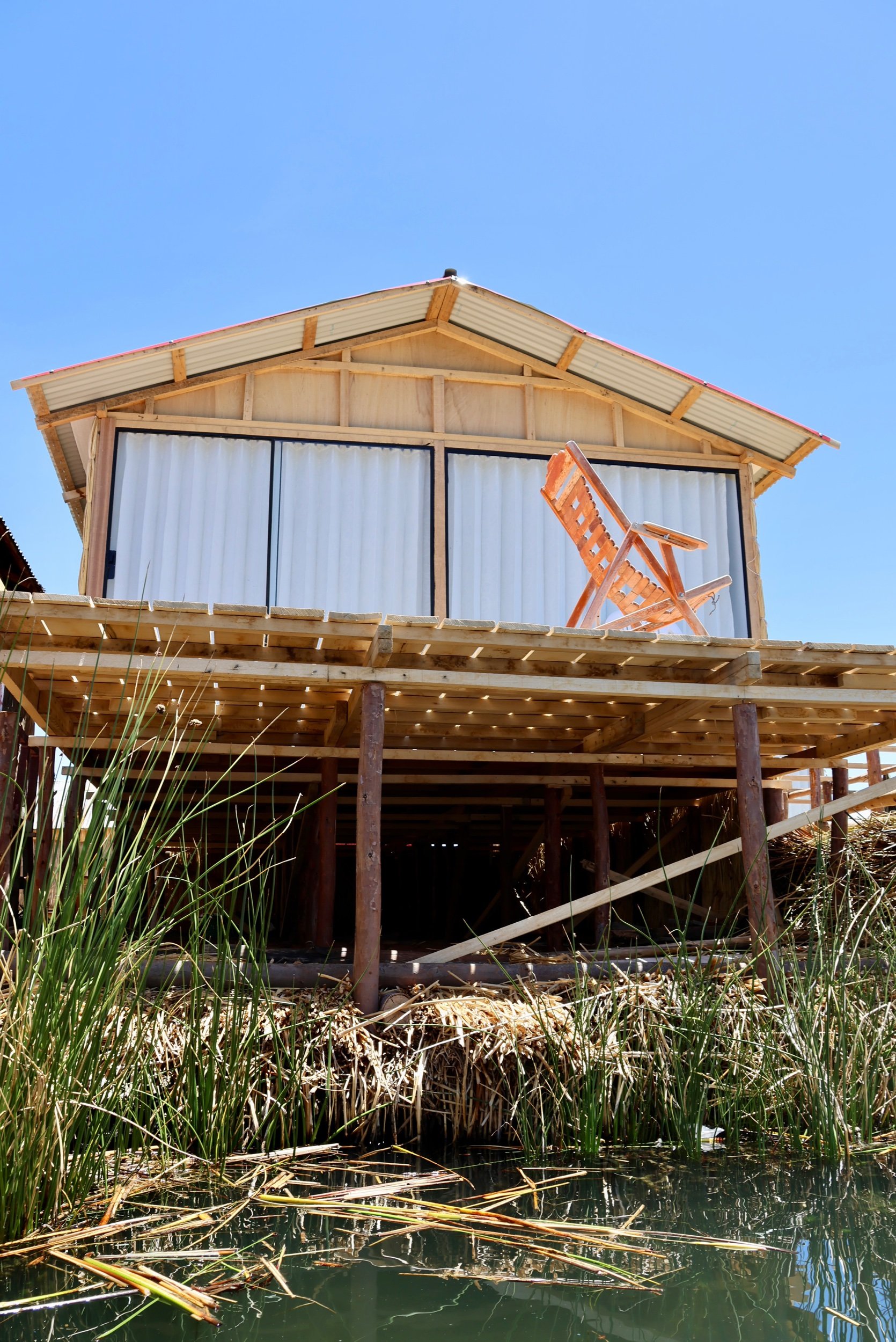
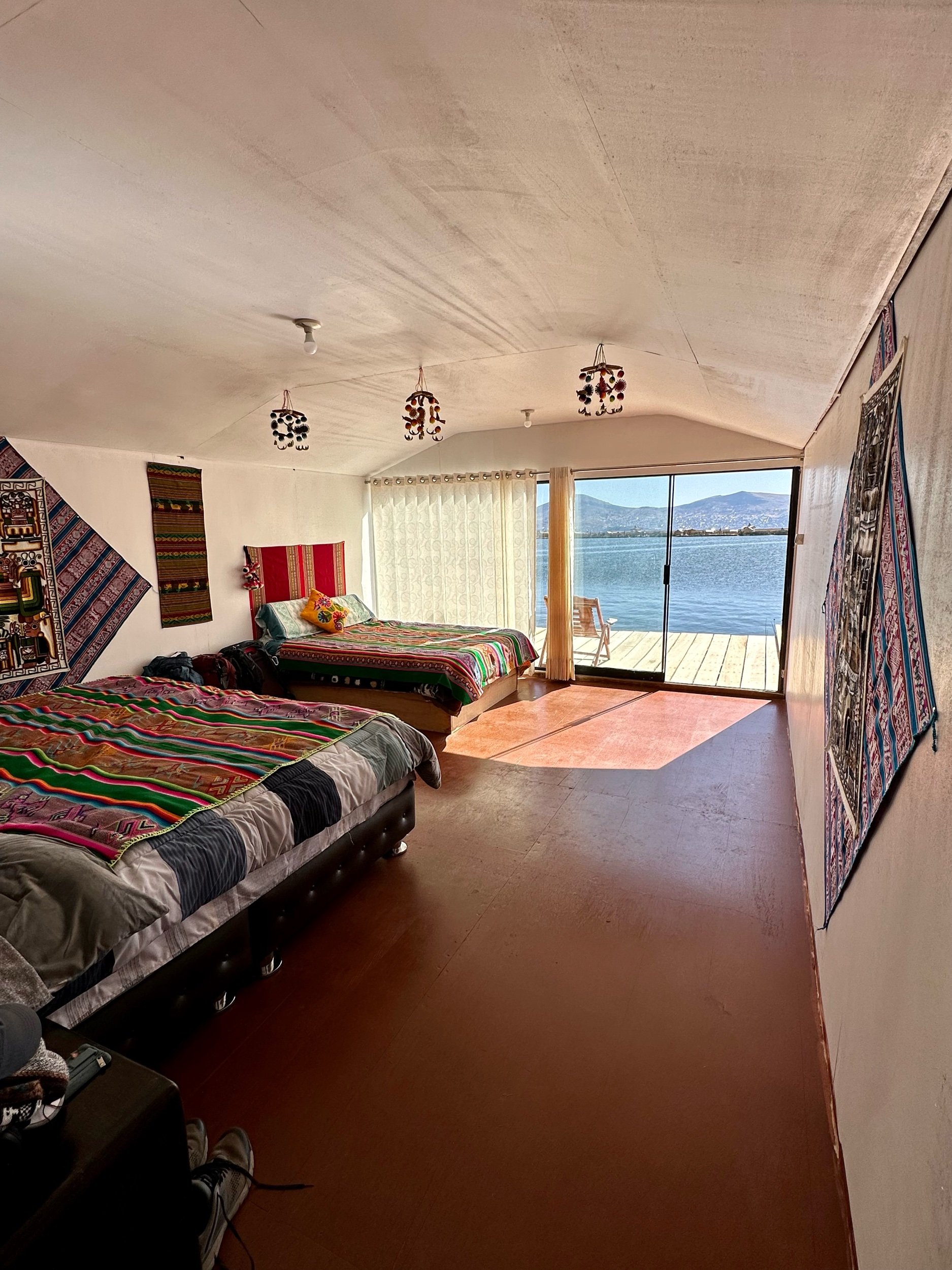
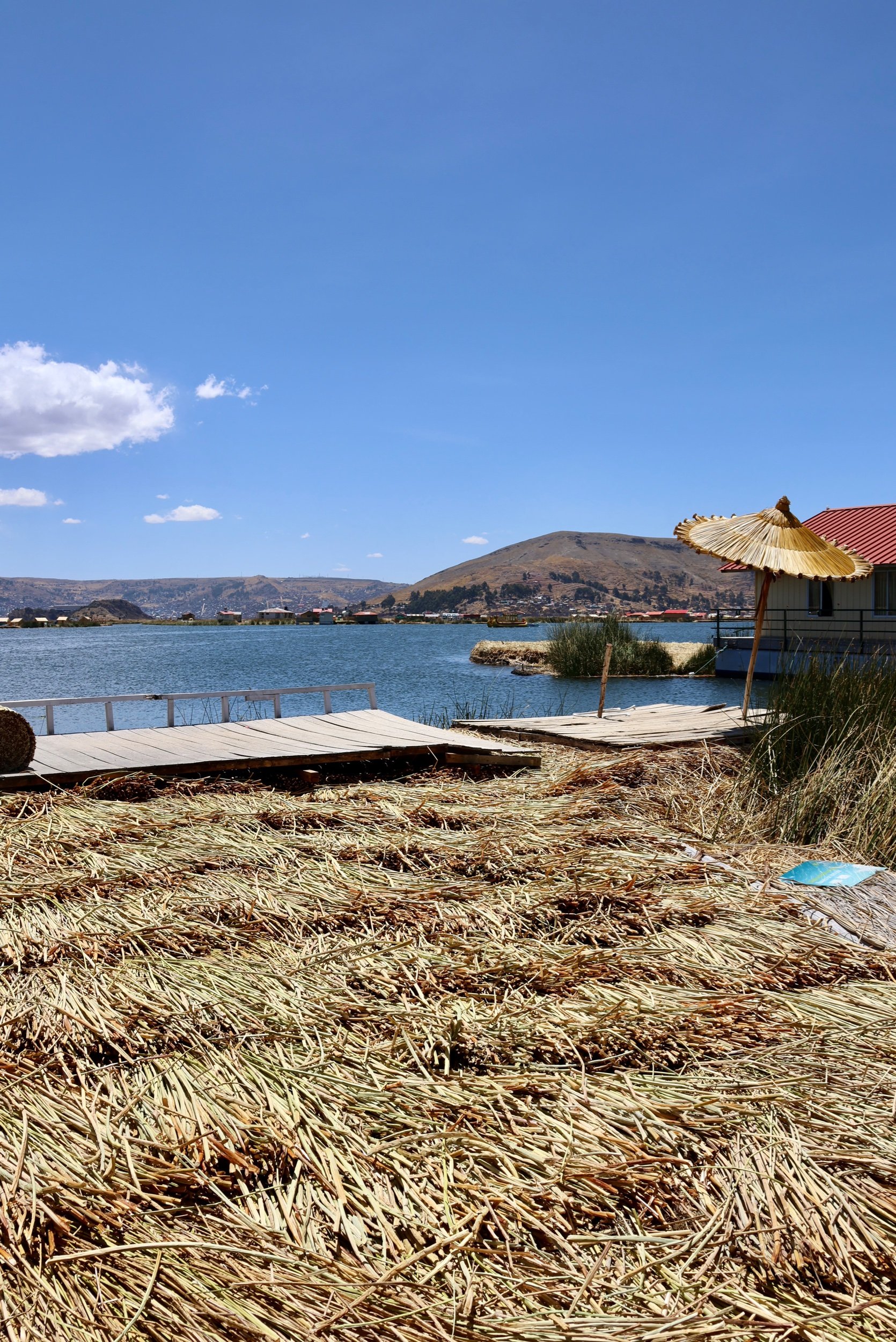
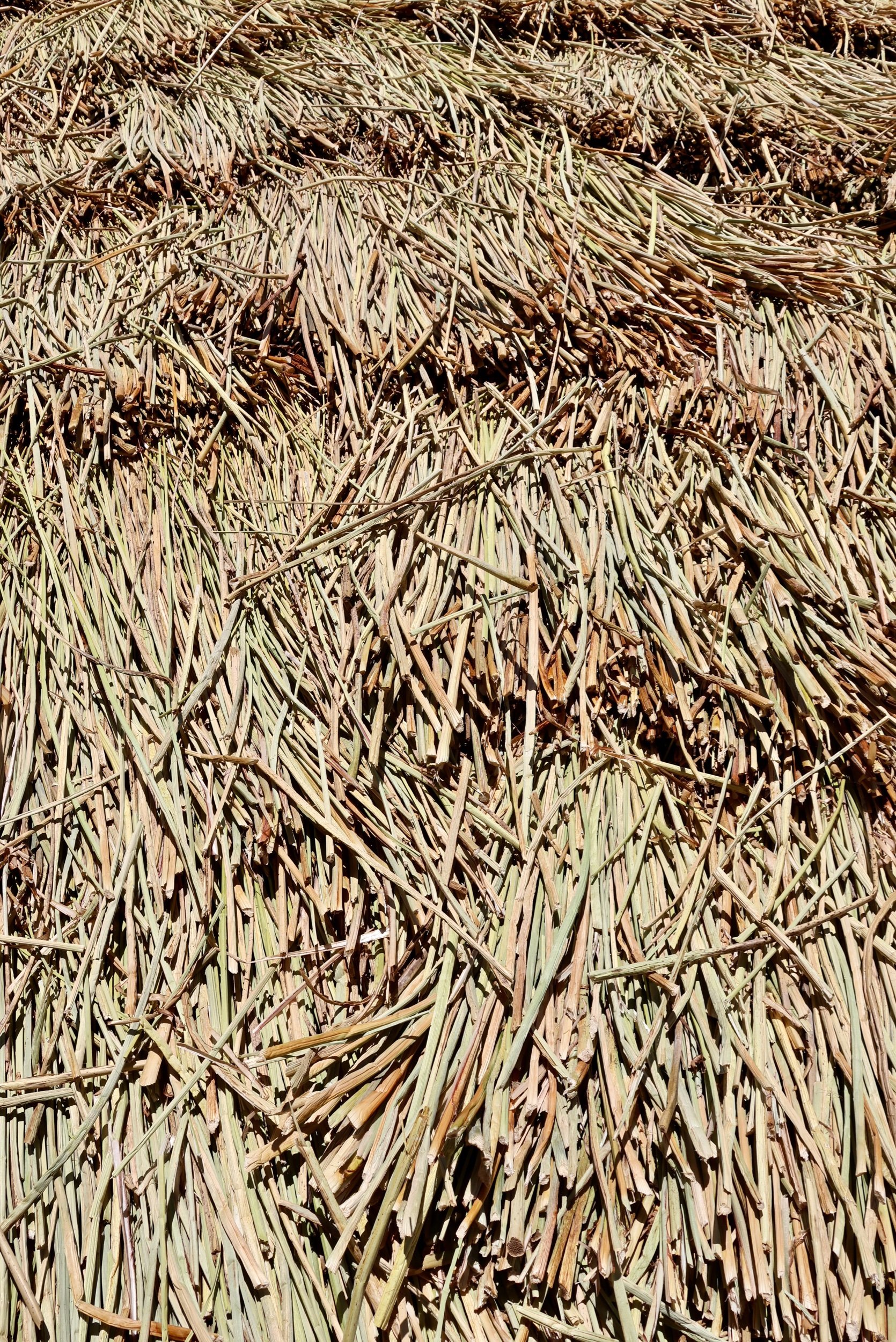
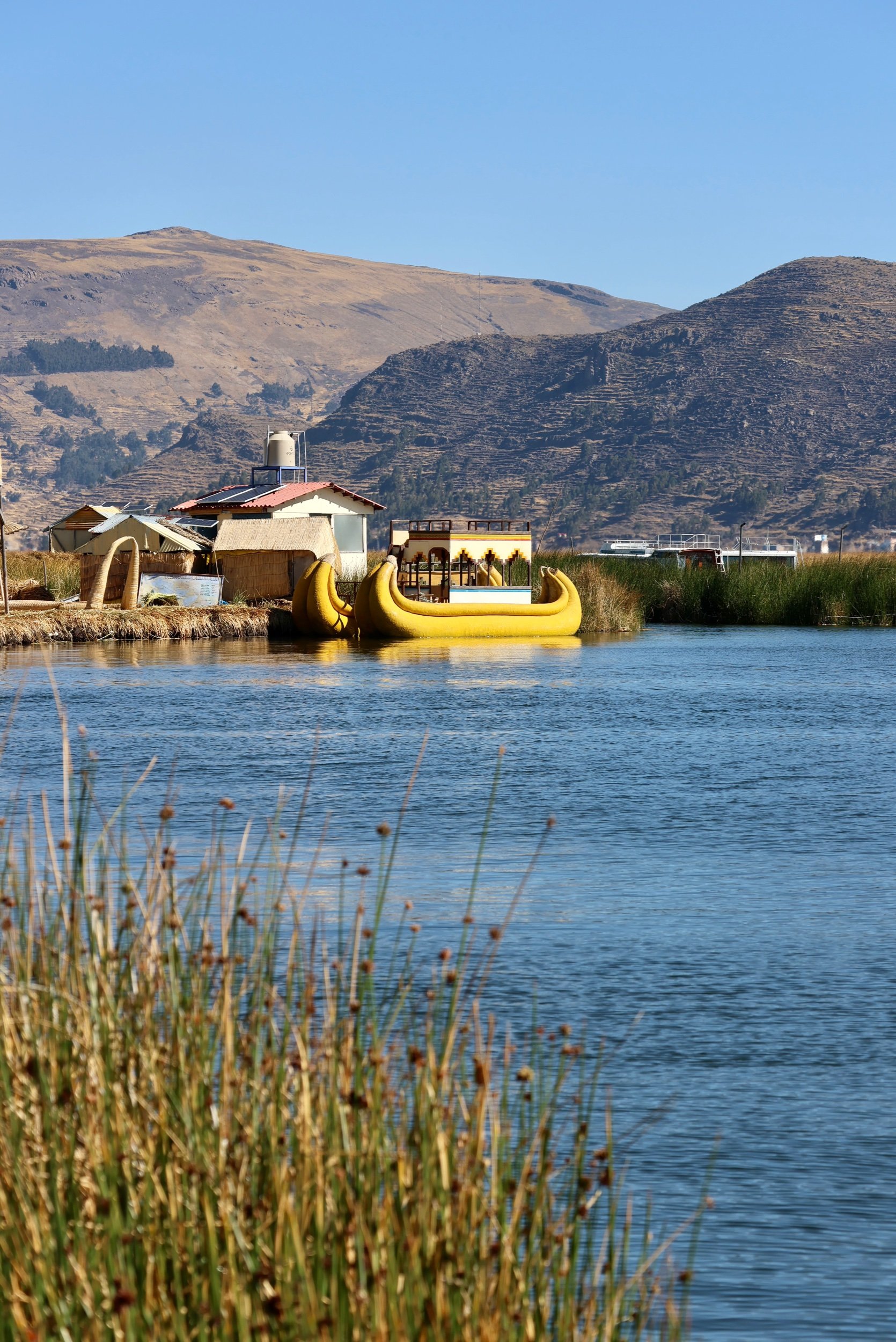
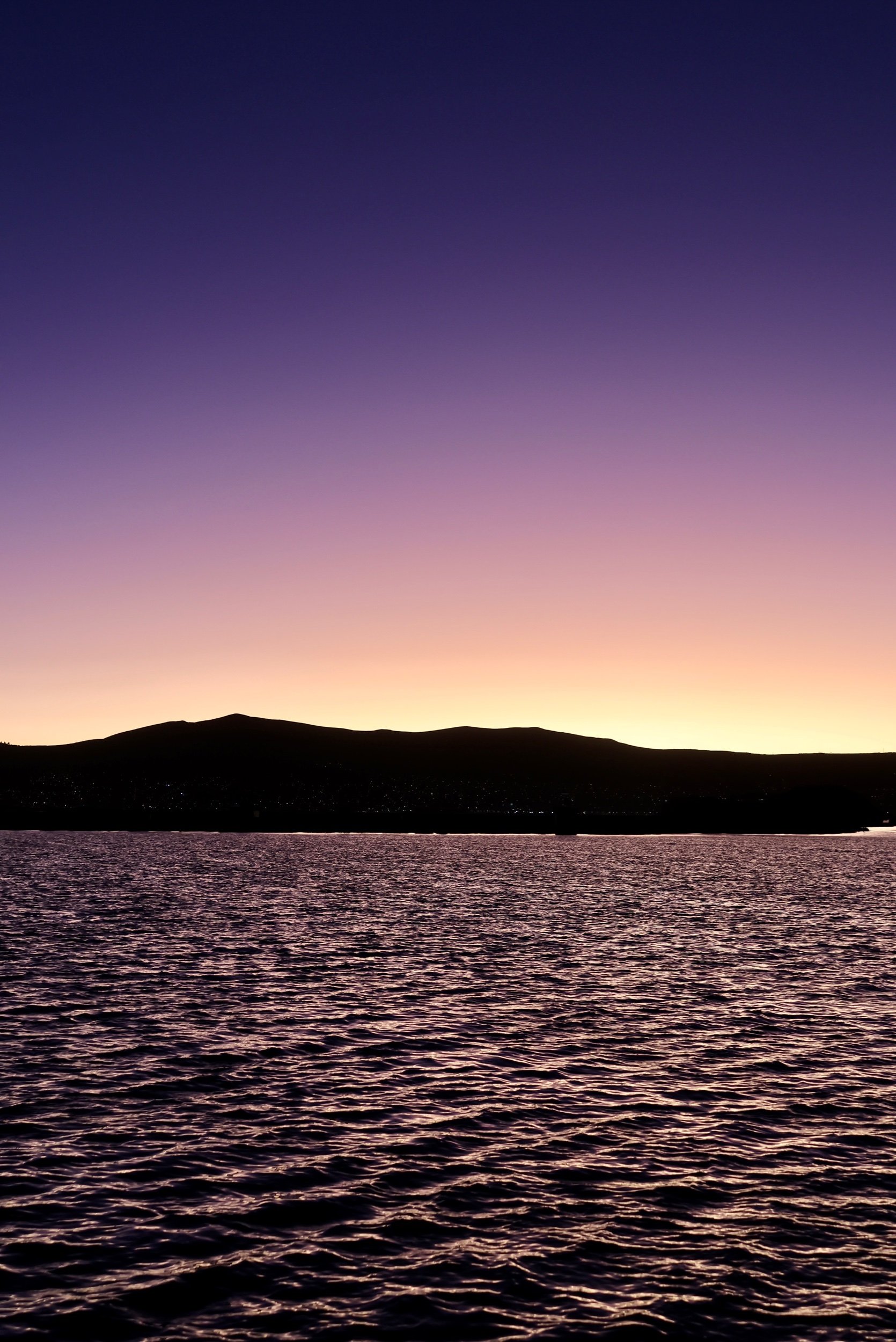
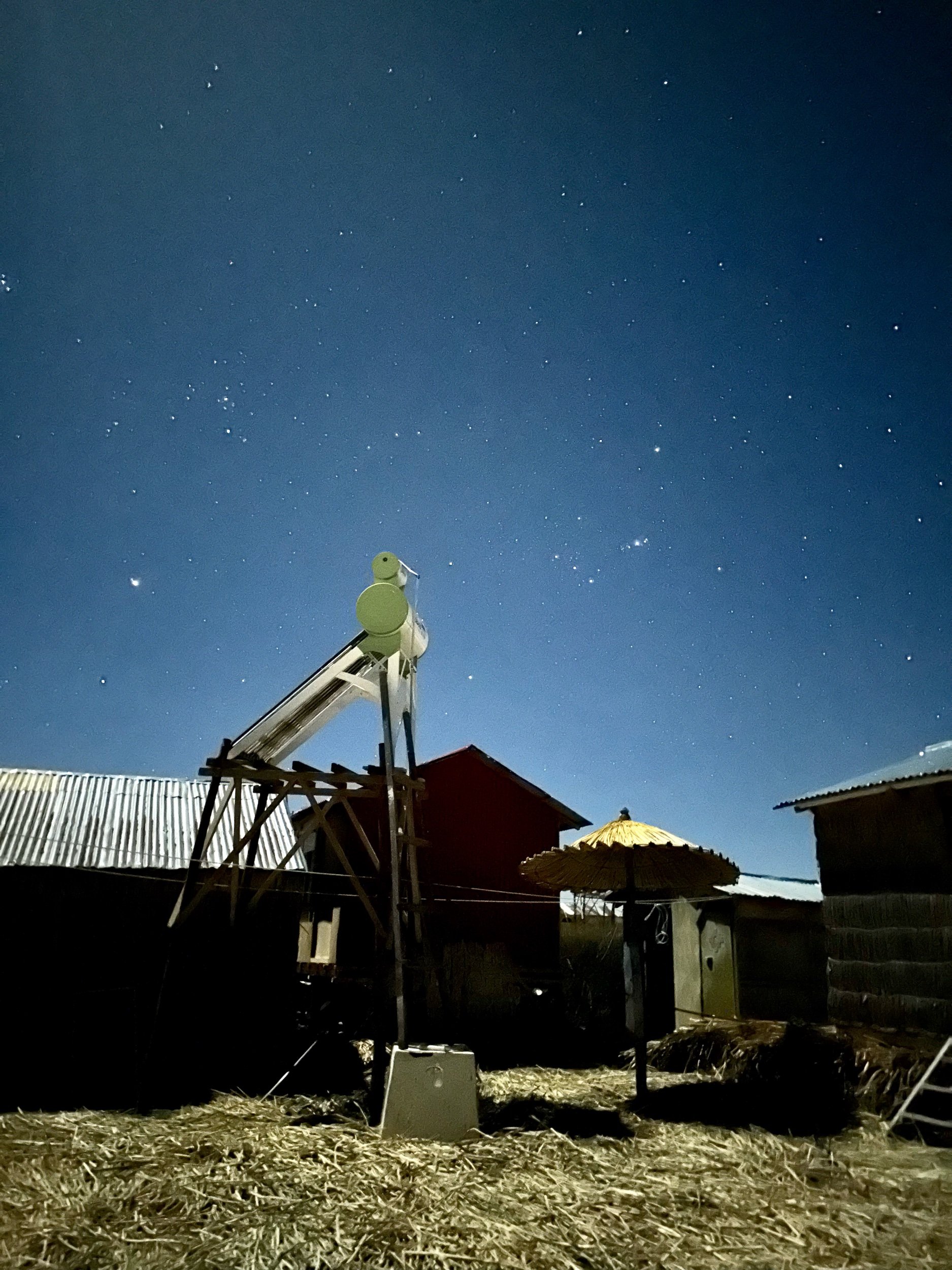
We started our morning with breakfast and then went kayaking around our island. The Uros community was built along a main channel running N-S so we mostly just paddled around other islands along the channel. We were able to see more reed islands as well as how some locals lived on the islands. Unfortunately many islands had been converted to tourist shops and there were a ton of these ugly, banana-cat boats that had been invented in the 1990s for tourists to ride on. We also saw some dogs who lived on the islands!
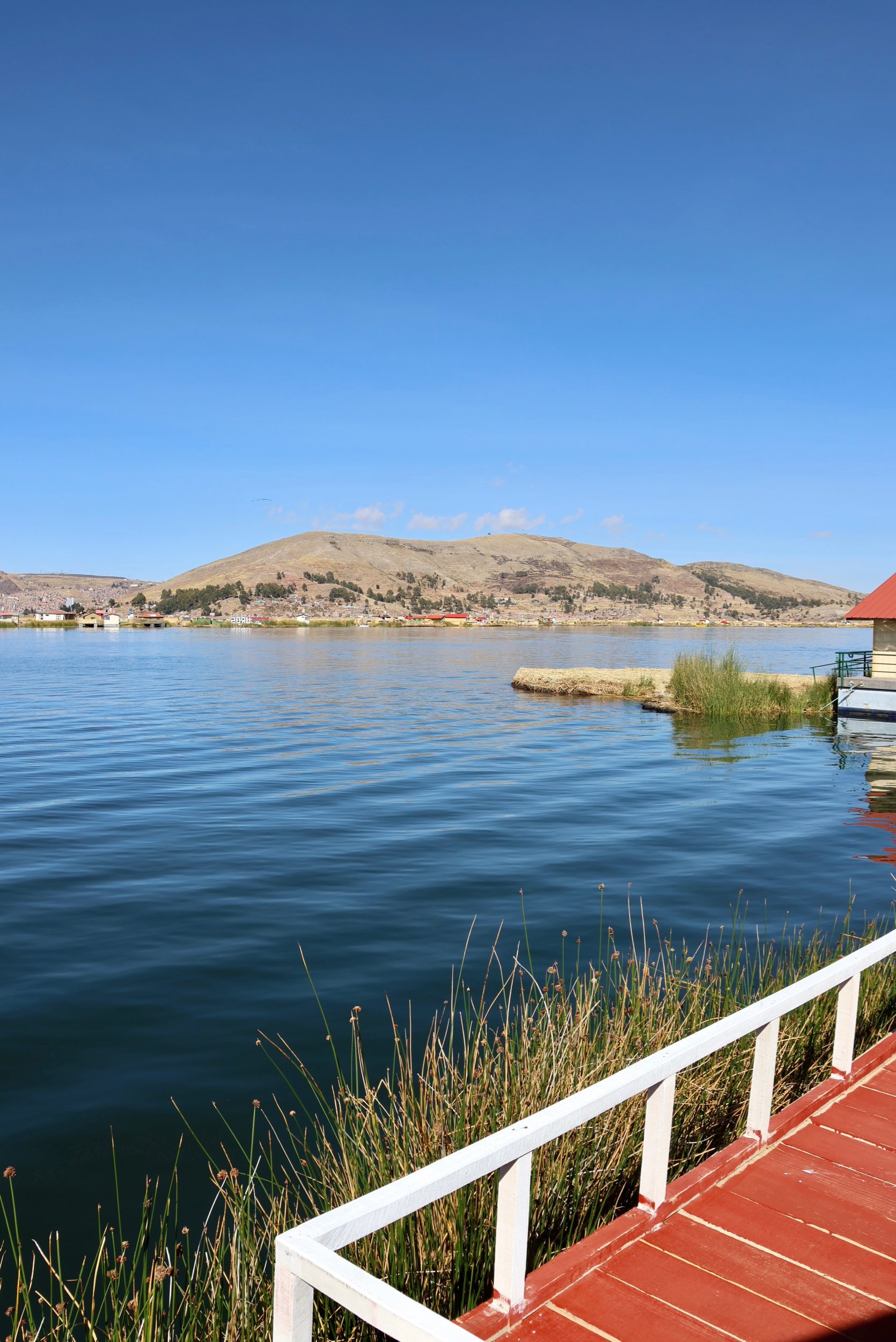
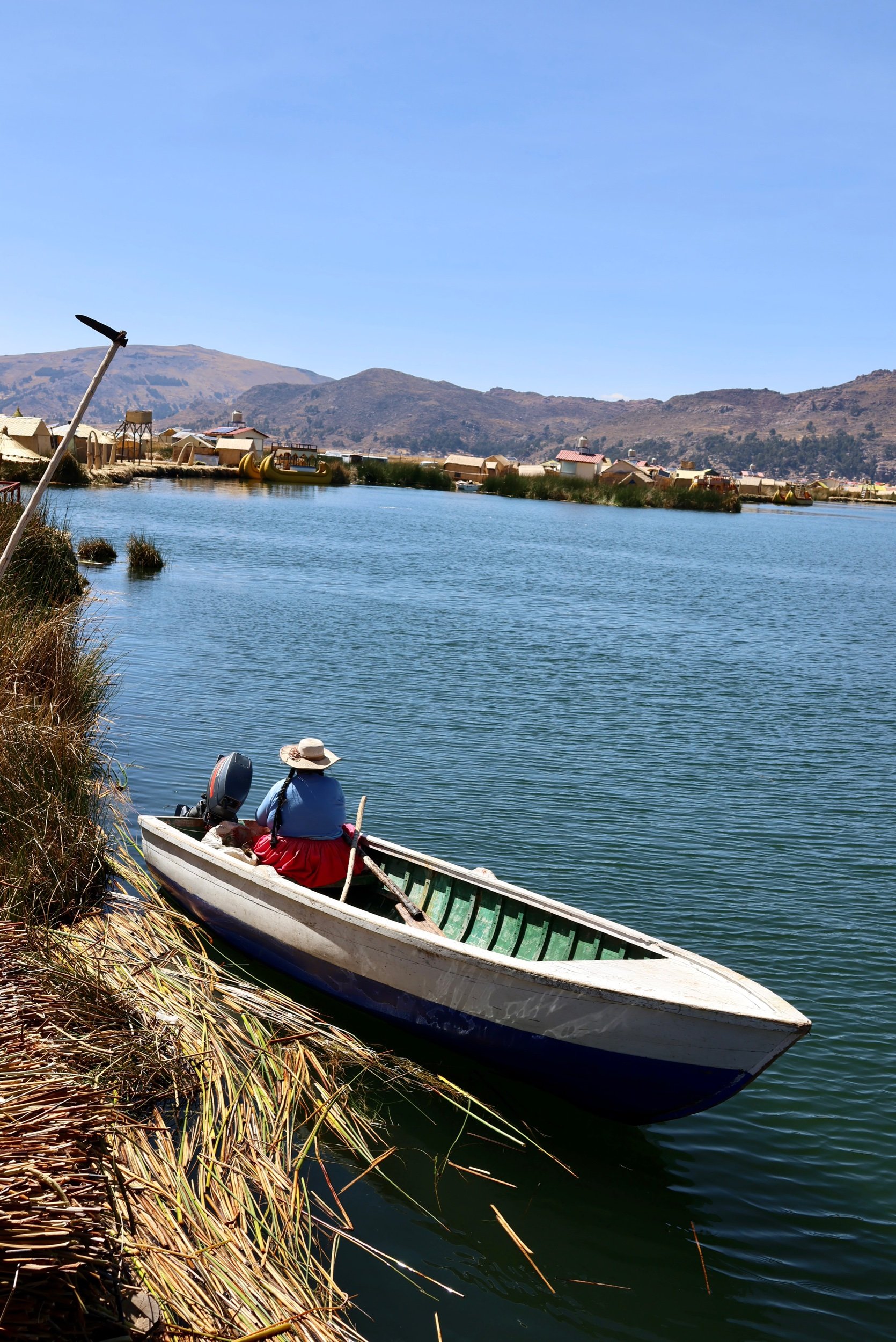
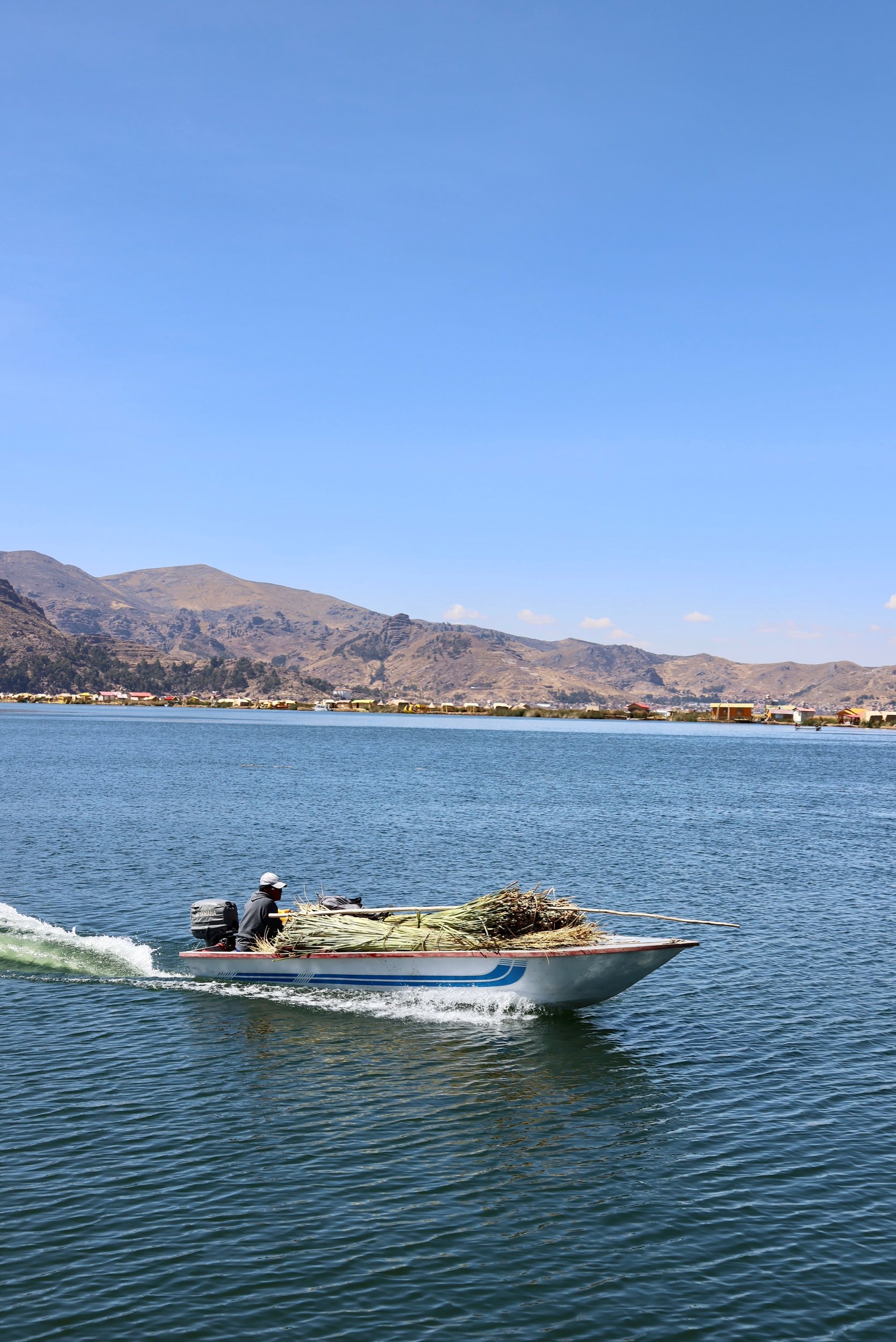
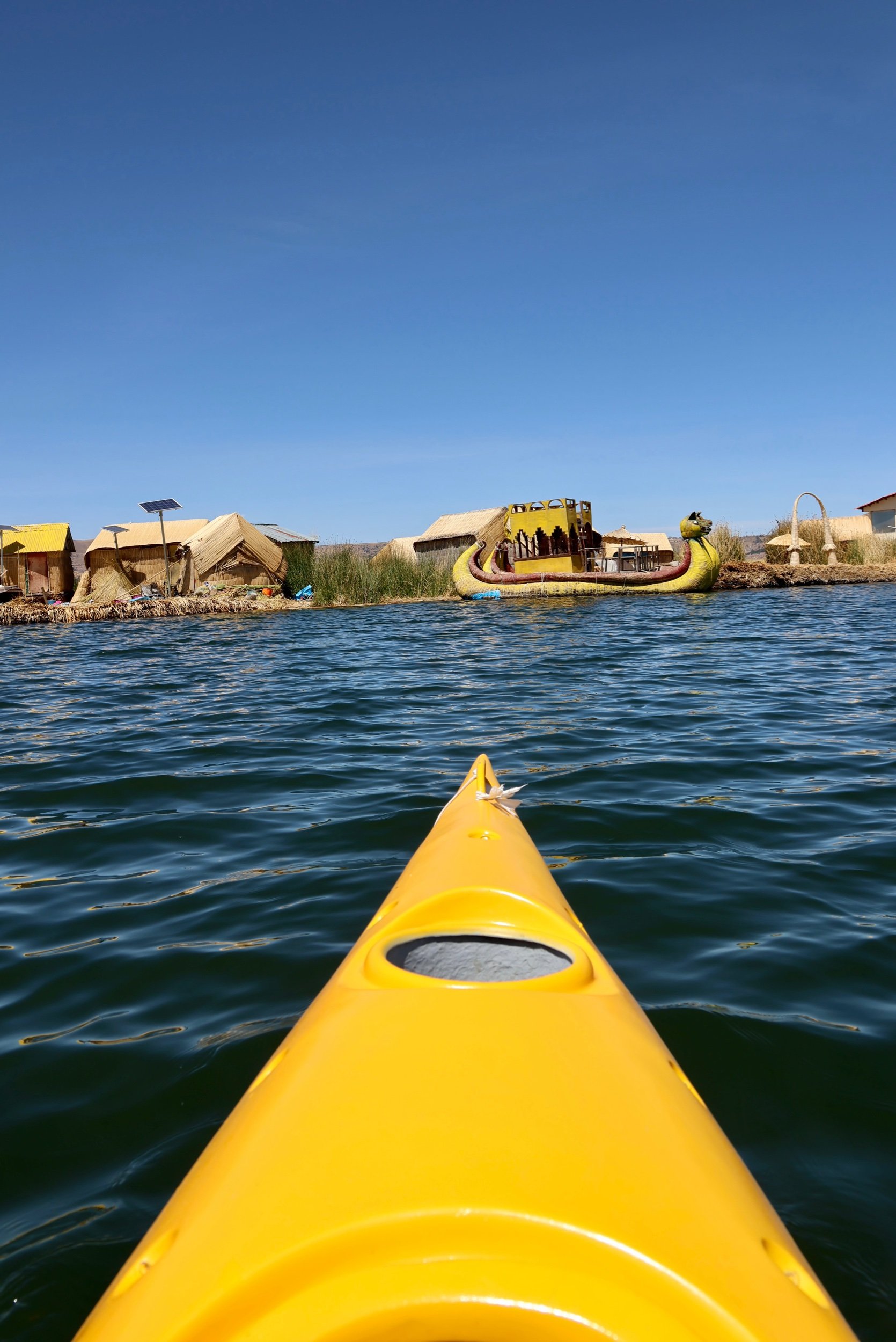
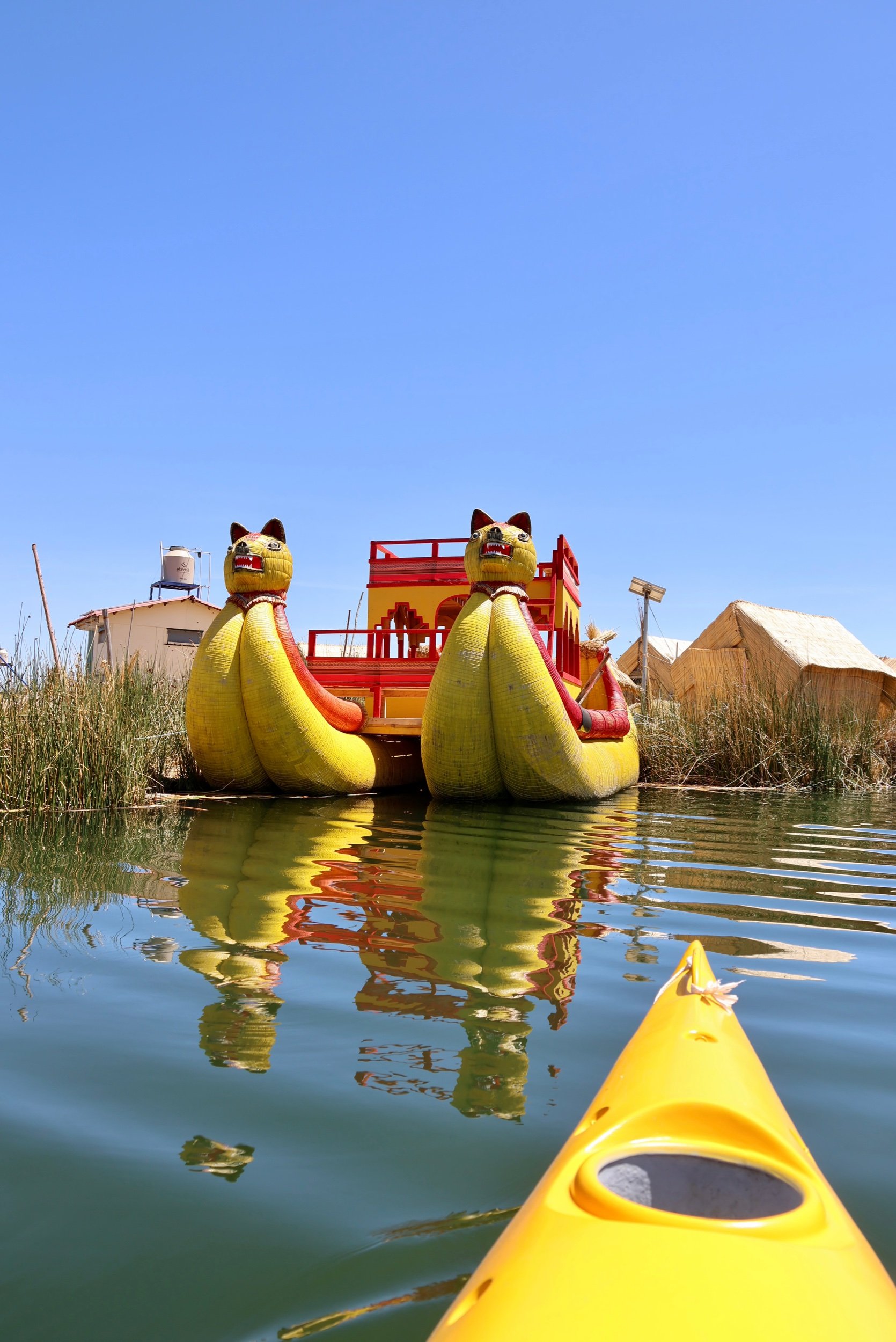
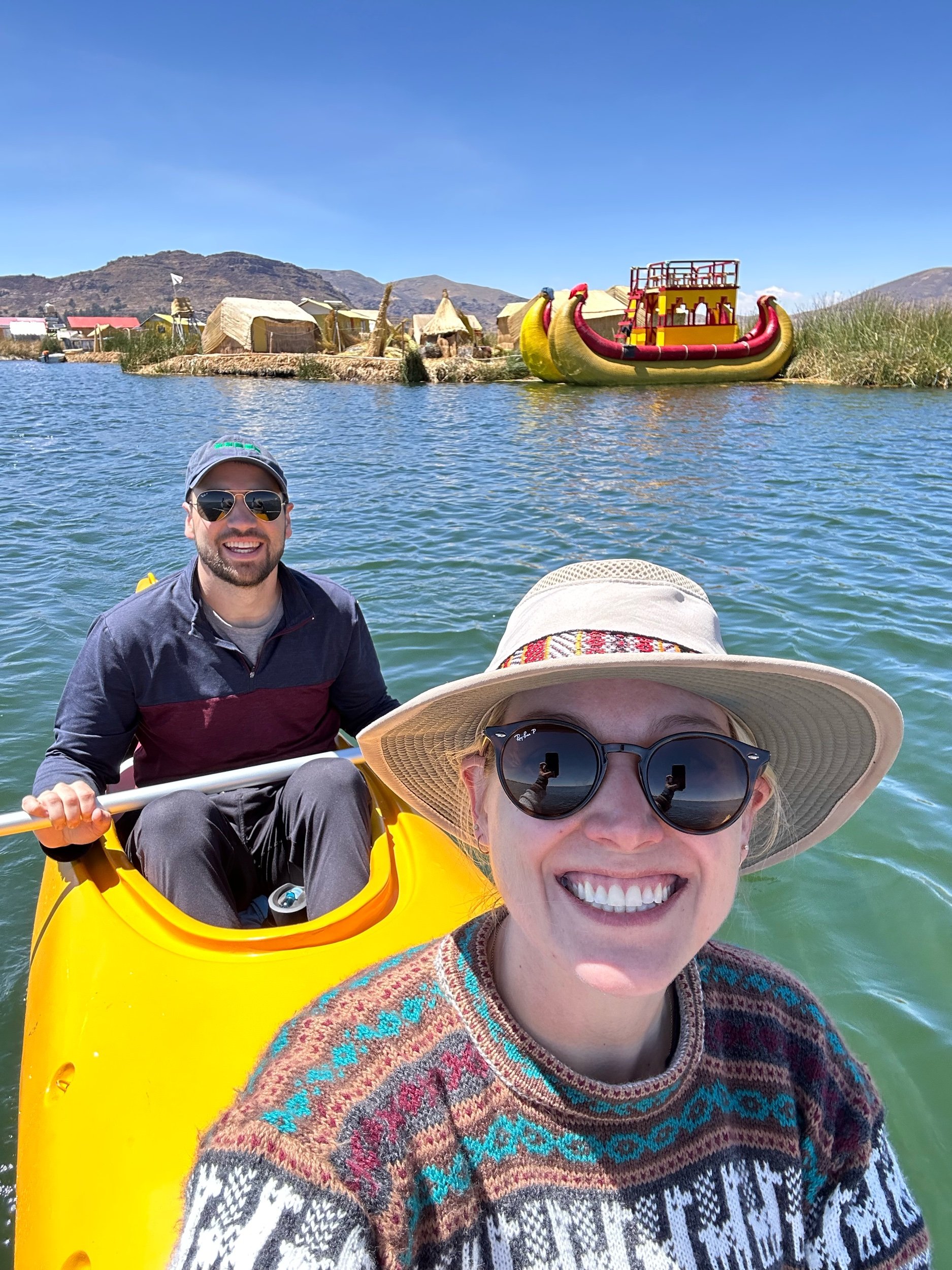
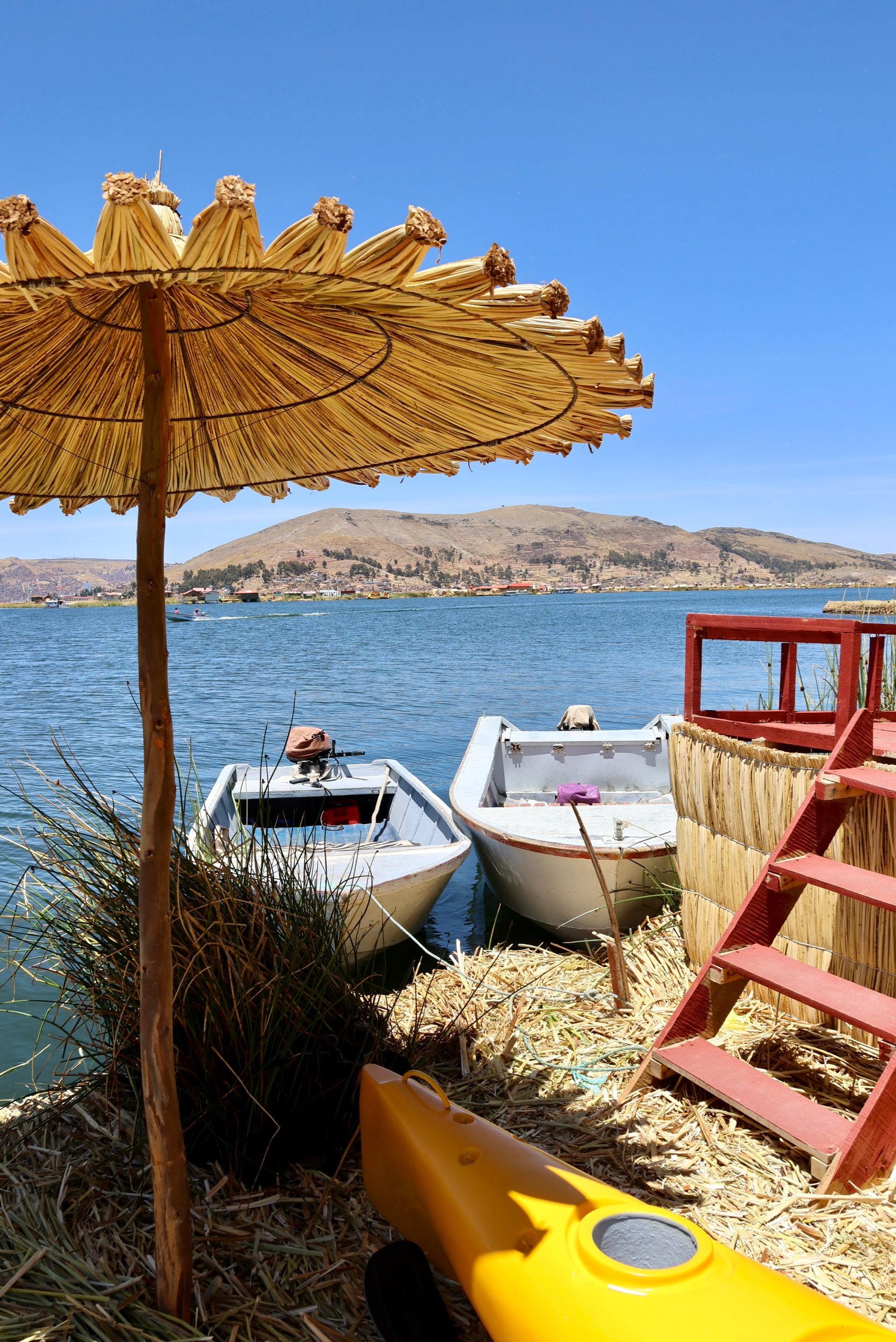
Ruben then took us to a local restaurant for lunch where we had some fried fish and enjoyed the view of the lake. We bought a bottle of wine at the restaurant to enjoy during the sunset later that day. Spoiler alert; the wine was terrible. It was like bitter non-alcoholic grape juice. Which, yes, I know that’s literally what wine is but this actually tasted just like that.
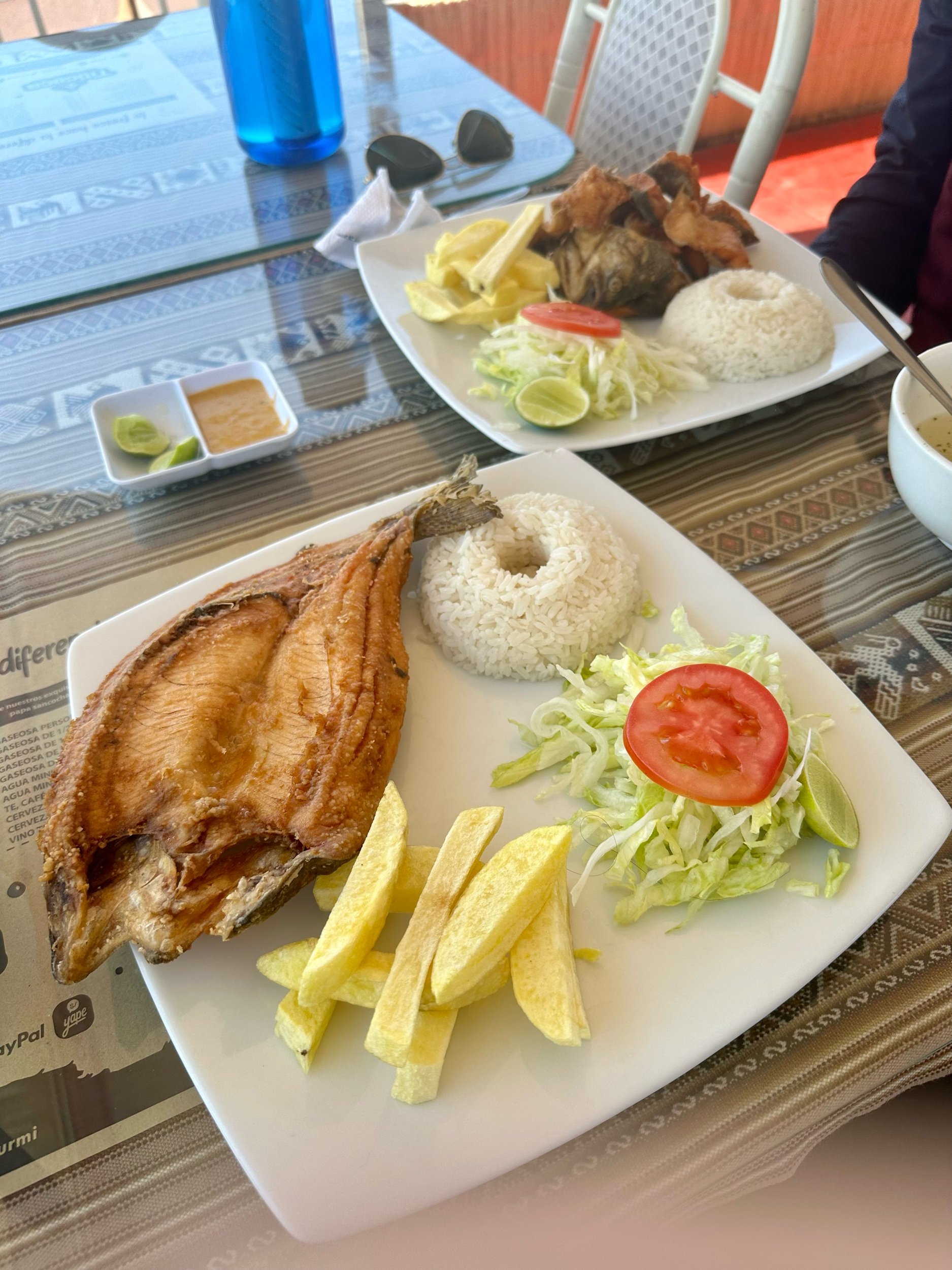
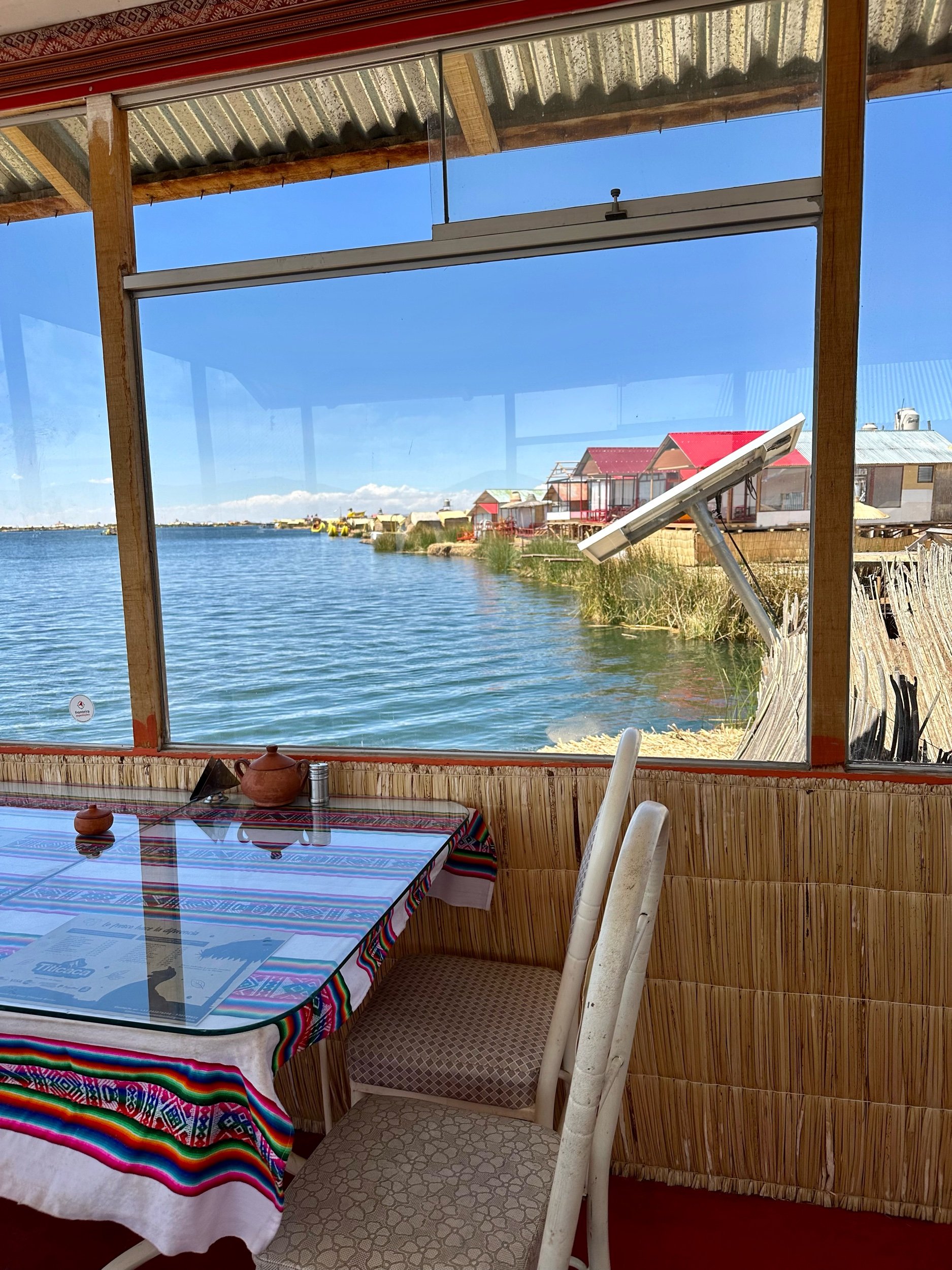

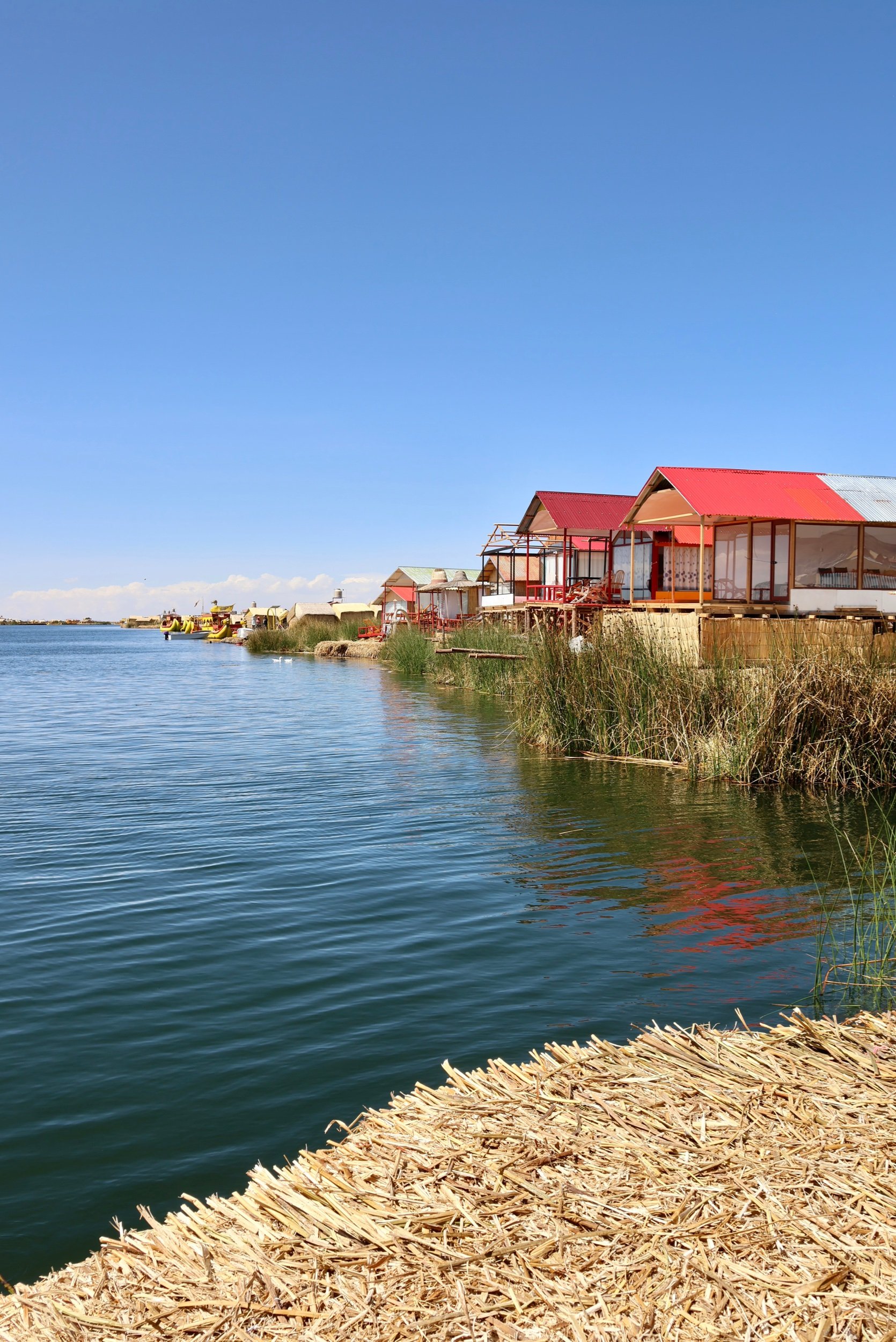
We then visited a local island where Ruben talked to us about the history of fishing in the lake. The floating islands actually served as a refuge for the Inca people when the Spanish invaded. At first the indigenous people lived along the lake shore like every other lake in the world. The Spanish took over their towns and drove them out of their homes. The lake contained natural reeds and marshes on its shallow shores so the locals, out of desperation, made the first floating islands and soon it became a way of life. Our guide grew up on the lake and his dad used to be able to catch 15-20 kgs of fish in a single day, while now locals can only catch 1-2 kgs in a single day. Pollution and tourists ruining habitats are the biggest culprits. The lake has trout now but those were actually introduced from Canada.
We also learned about the island making process. Ruben said that at any time a family can move their islands to another part of the lake if they want; there are no “land” or “property” rights that you can claim on the lake. You start an island by grabbing reeds that are growing and have a lot of mud on the bottom. Then you start layering the “farmed” or “cut” reeds and growing the size of your island with more natural reeds. Ruben said that a new layer of reeds needs to be added every 15-20 days! That is so often! The houses built on the islands are on structures above the reeds so they only need to be replenished once a year. But, in order to do this, they have to move the house to another location on the island! He said they use tools and jacks to help but still! After that we came back, “enjoyed” our wine while watching a beautiful sunset, had dinner, and went to bed.

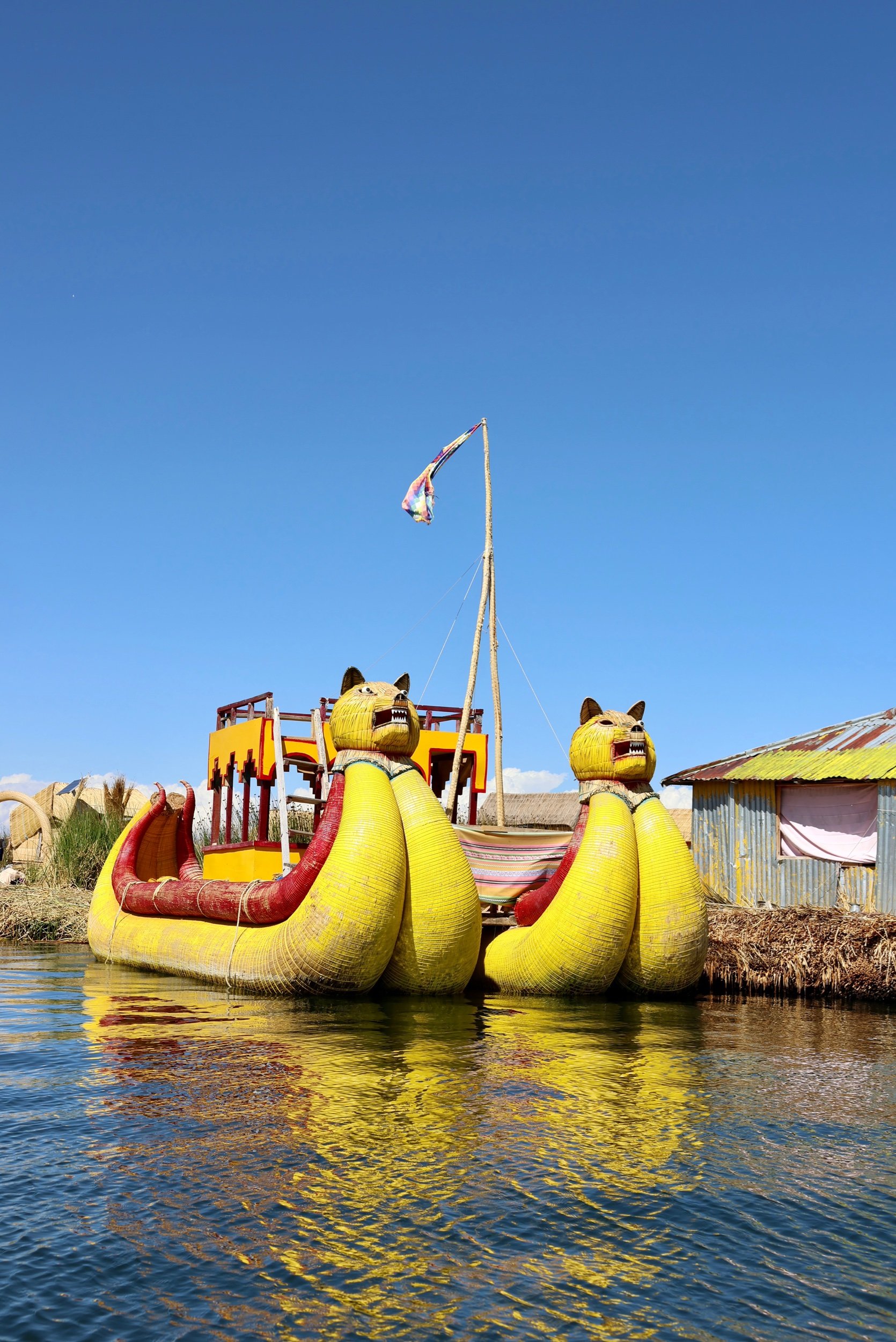

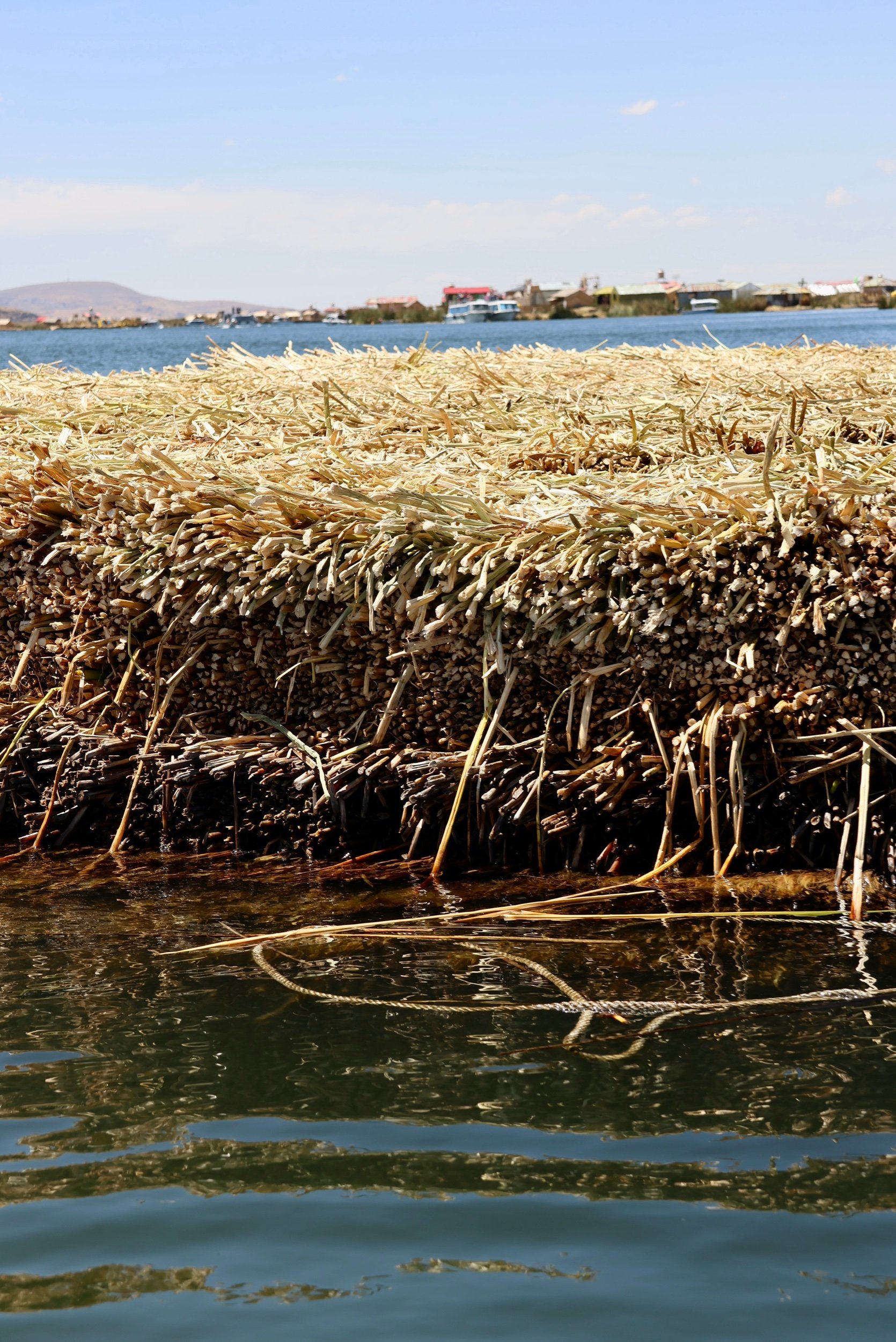
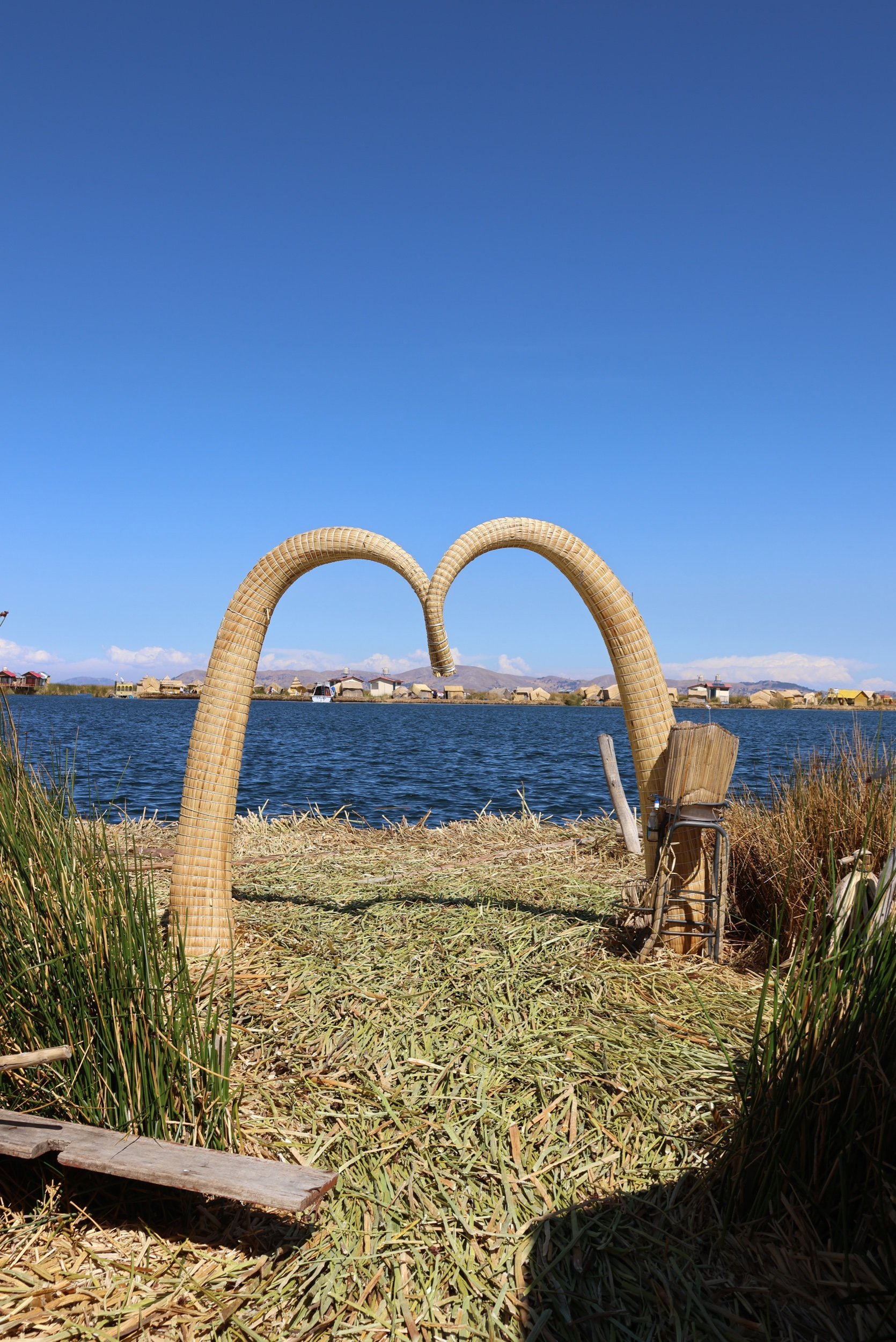
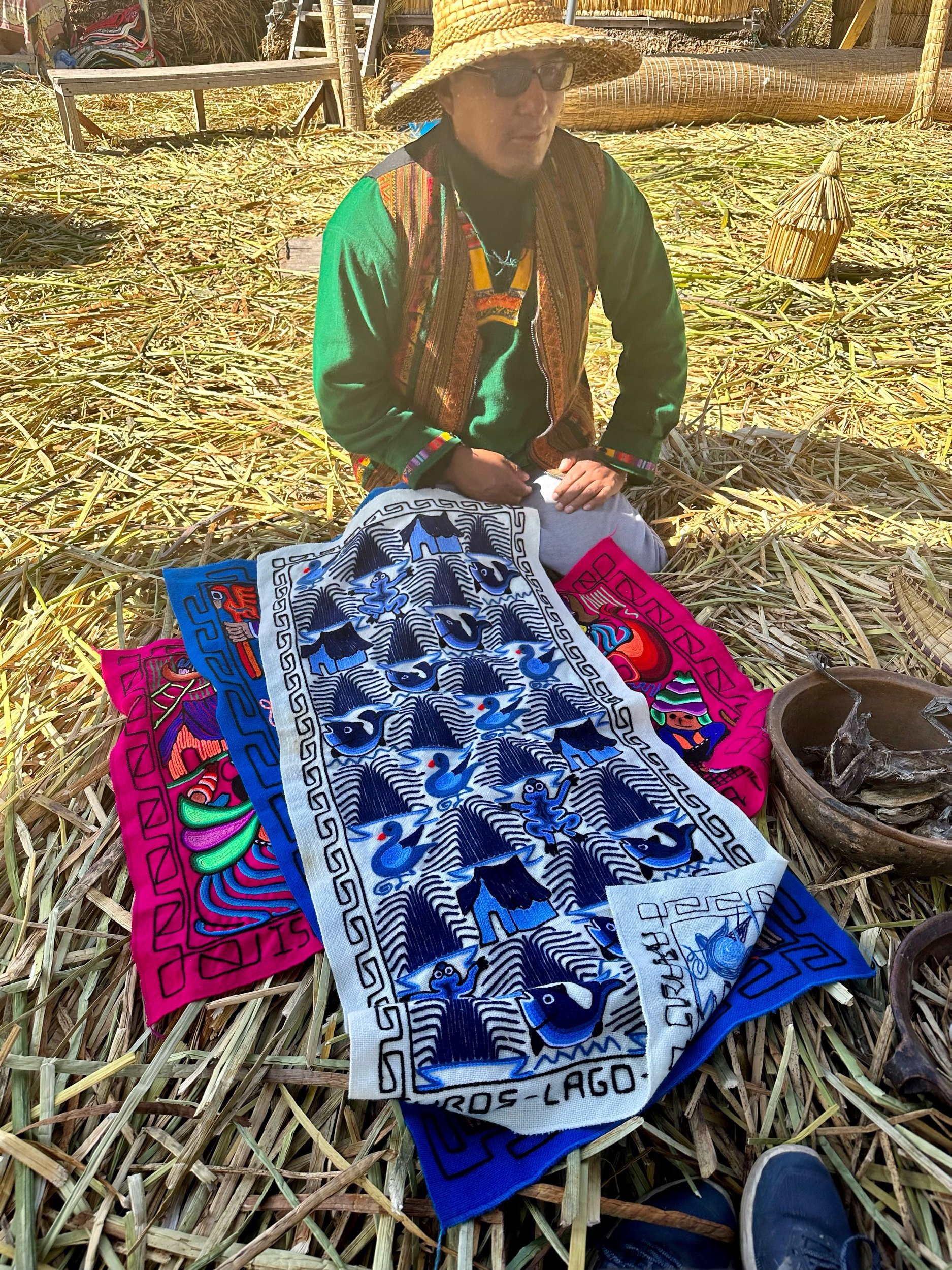
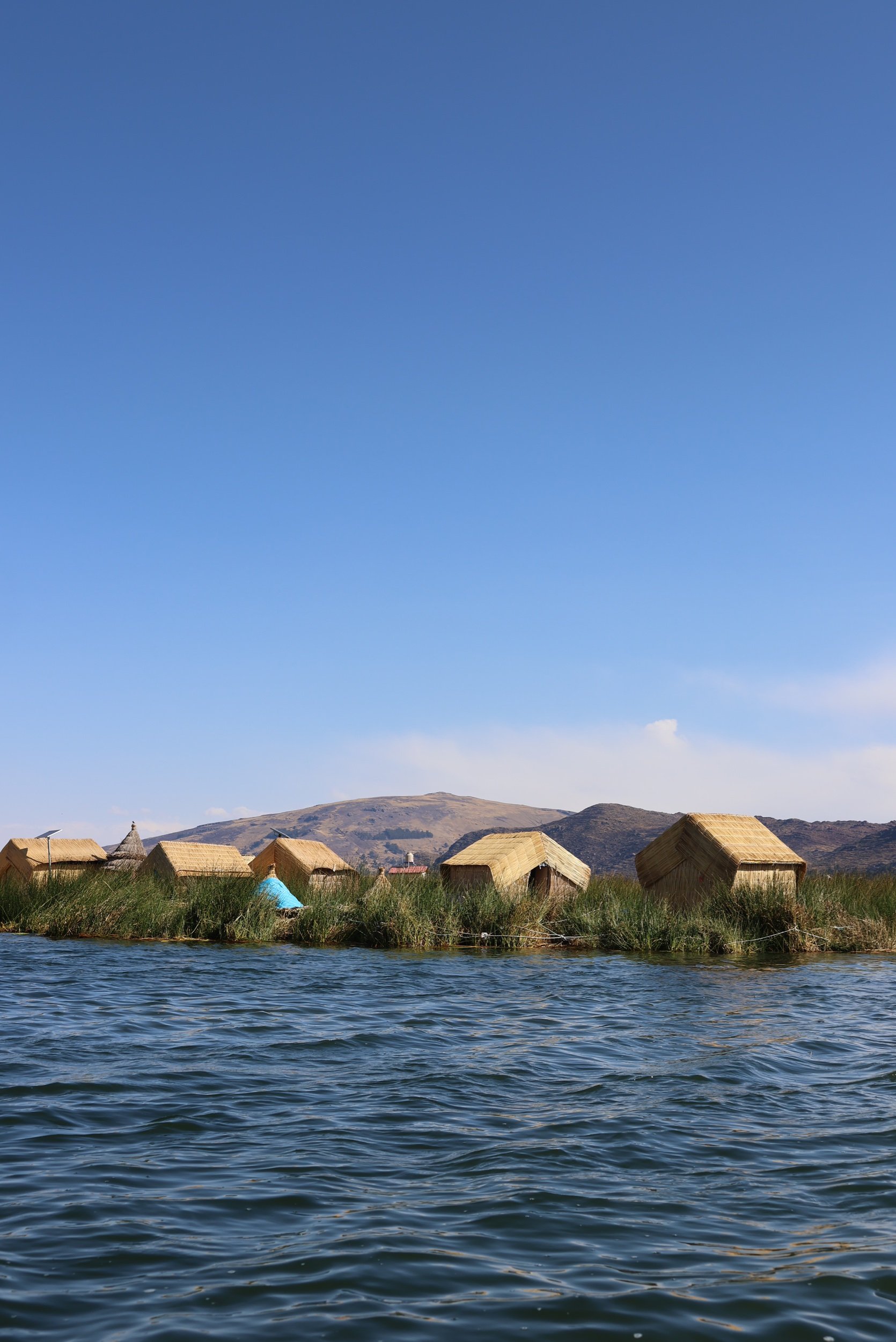
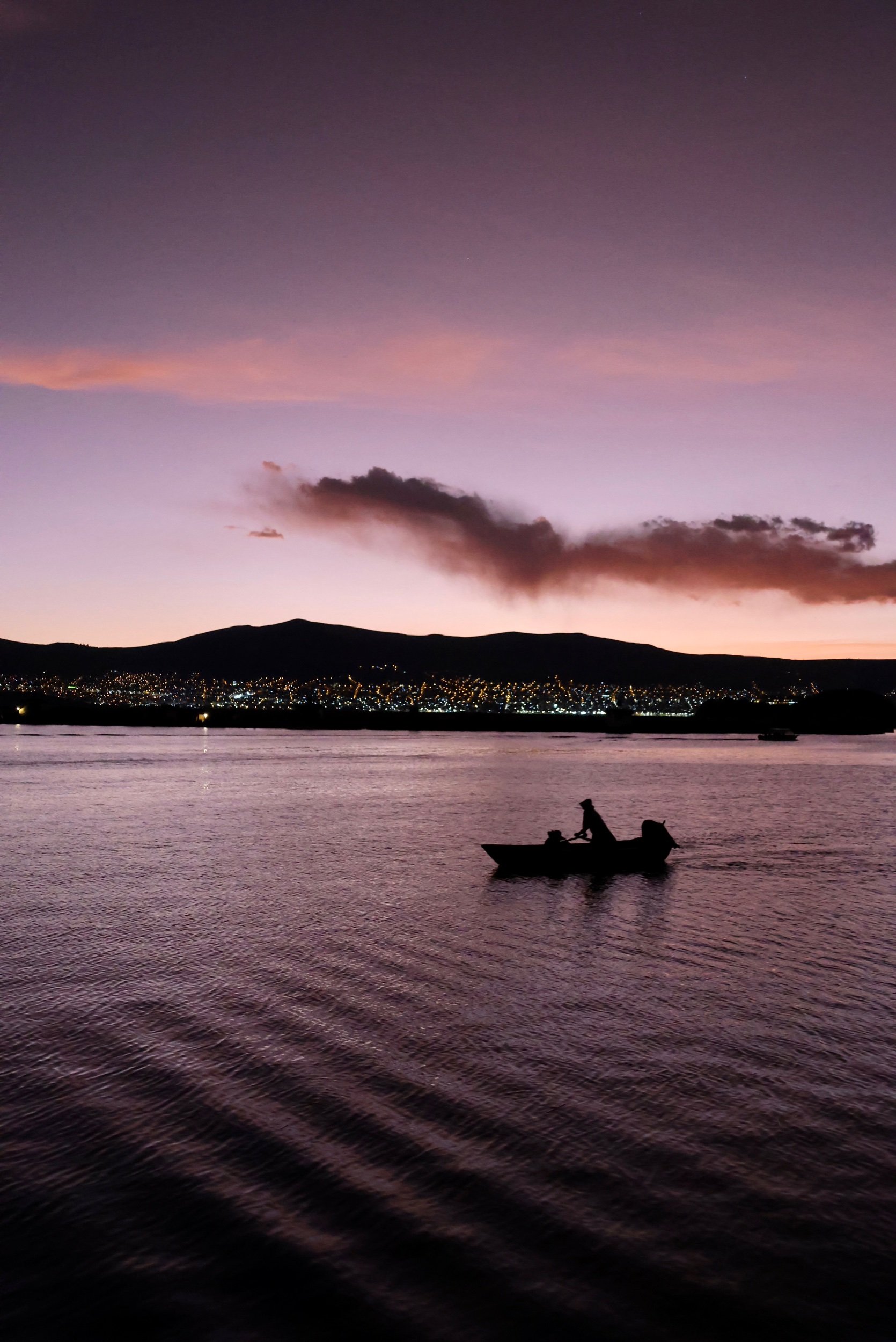
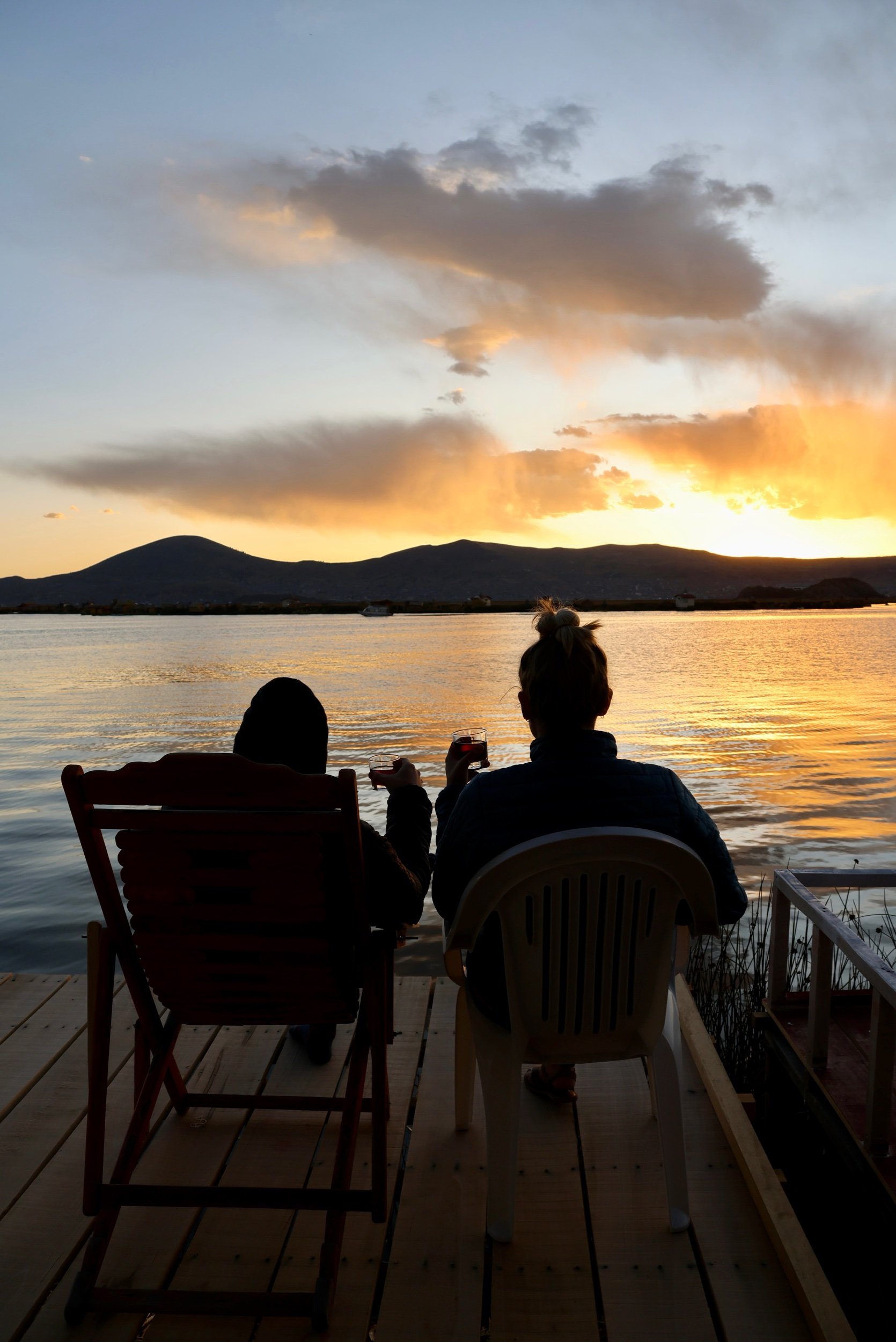
We only had two nights on our island before heading to the other side of the lake to our next destination, La Paz. As we woke up on our last morning we saw that it was snowing on the mountains on the lake shore. Our travel plan to La Paz was kind of crazy.
To get to La Paz we:
Left our hut and got on a boat
The boat took us to the lake shore where we got in a taxi
The taxi took us to the bus parking lot where we got on a bus
The bus took us to the Bolivia border where we walked across
We got through immigration to Bolivia (!!) where we got on a bus
The bus took us to Copacabana where we got on a boat
The boat took us to Isla del Sol where we walked around the island
We got back on the boat which took us to the main land where we got on a bus
The bus took us to a different part of the lake where we got on a boat
The boat took us to the other side of the lake where we got on a bus (which got on a rickety barge to get across too!)
The bus took us to La Paz where we got to our hostel, Selina.
WHAT!?!
That doesn’t even cover the fact that the Bolivian government hates Americans and makes getting a visa a huge hassle.
We needed:
a.) our passports
b.) photocopies of our passport
c.) extra passport photos
d.) proof of our plans in Bolivia translated to Spanish
e.) proof of our travel out of Bolivia
f.) bank statements proving we had money to afford to travel in Bolivia
g.) and finally crisp American dollars to pay the $160/person visa fee.
The dollar bills had to be *perfect*; no creases, stains, or bad edges. The immigration officer spent about 10 seconds examining each bill. Luckily ours were accepted but other Americans trying to get through didn’t have high quality bills so they had to come back to the bus to ask the other passengers if anyone had cleaner bills. Susan had all of it prepared and ready to go obviously, she crushed it as usual, and we got our visa without issue!
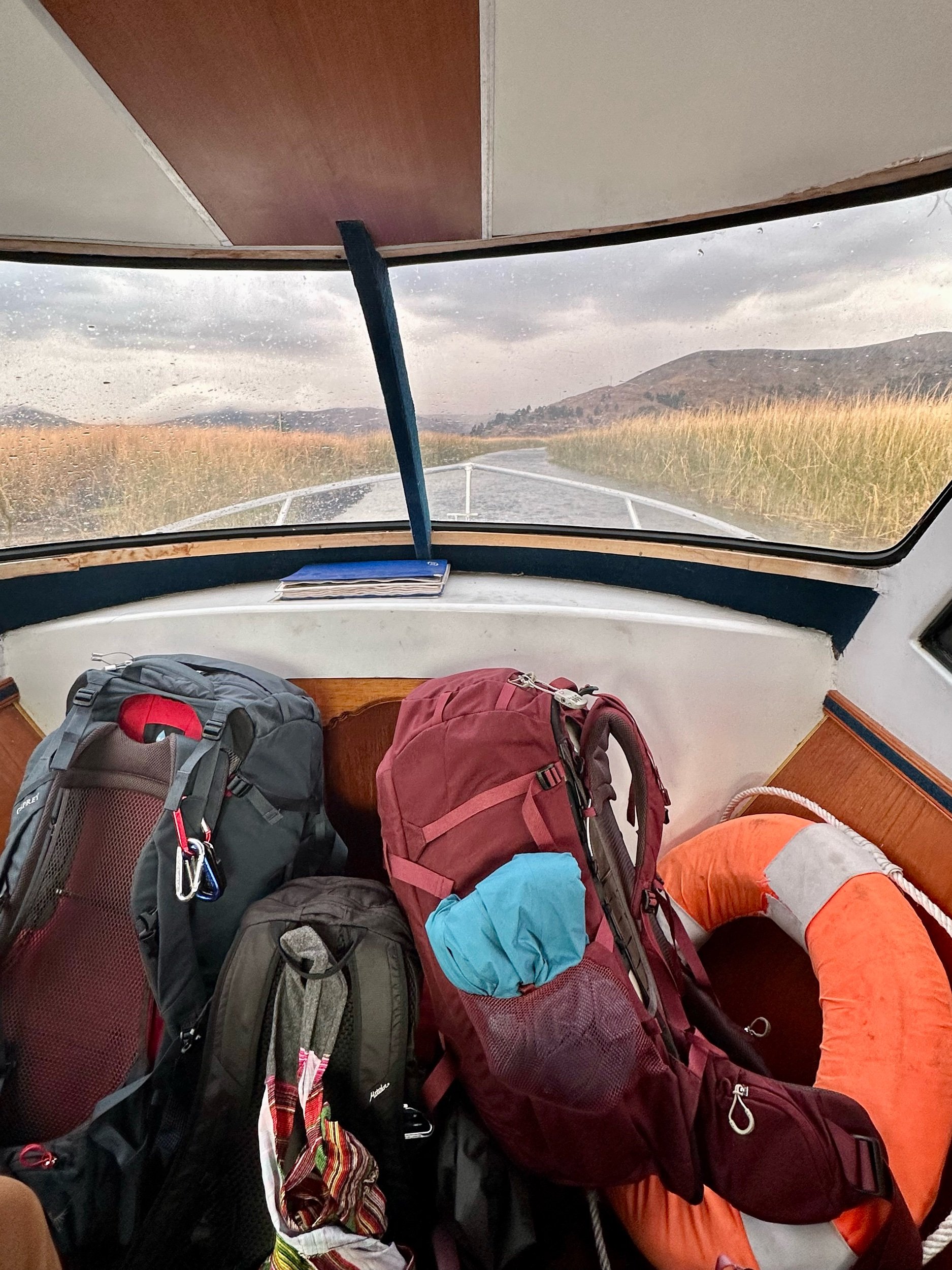
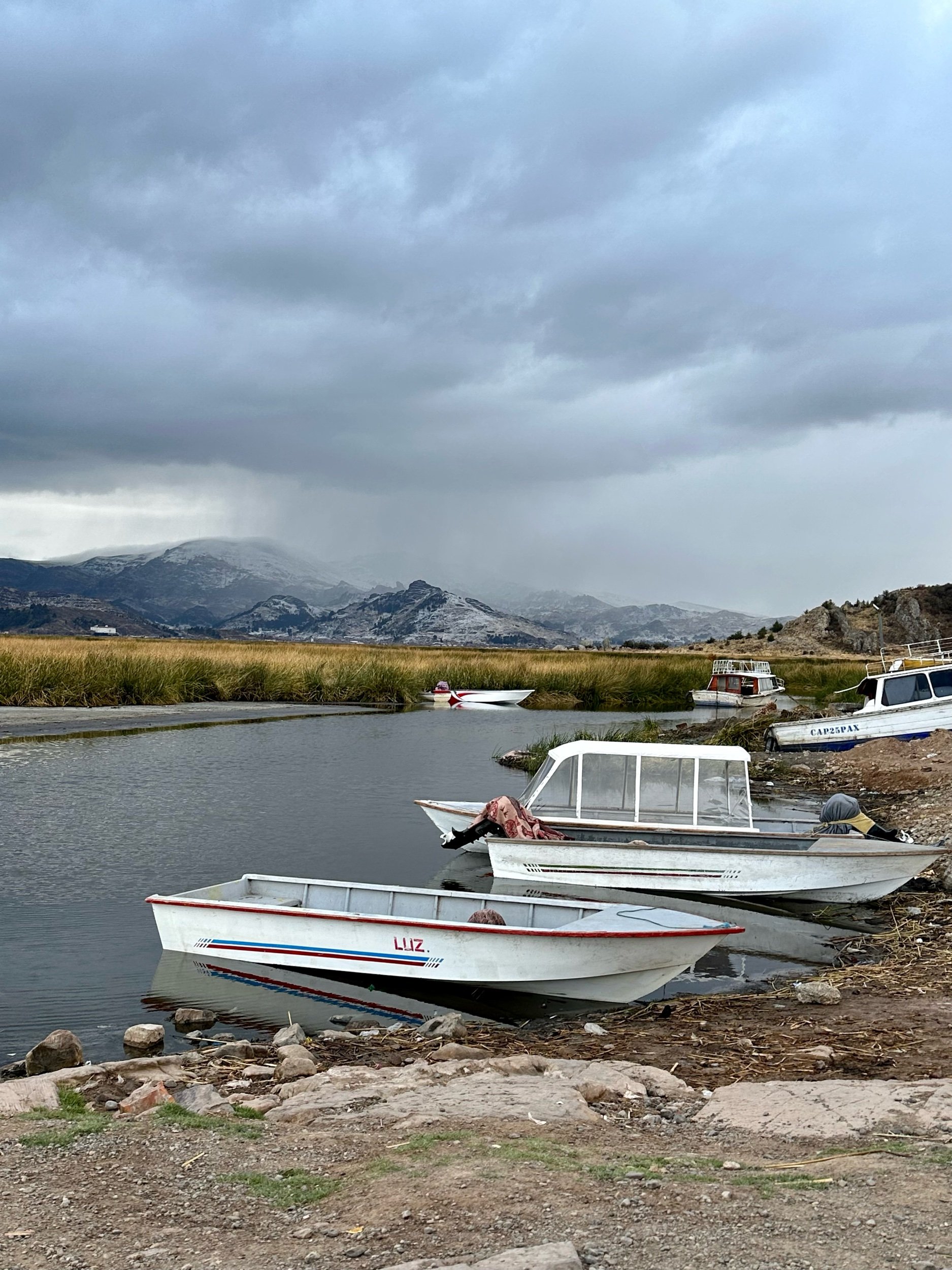
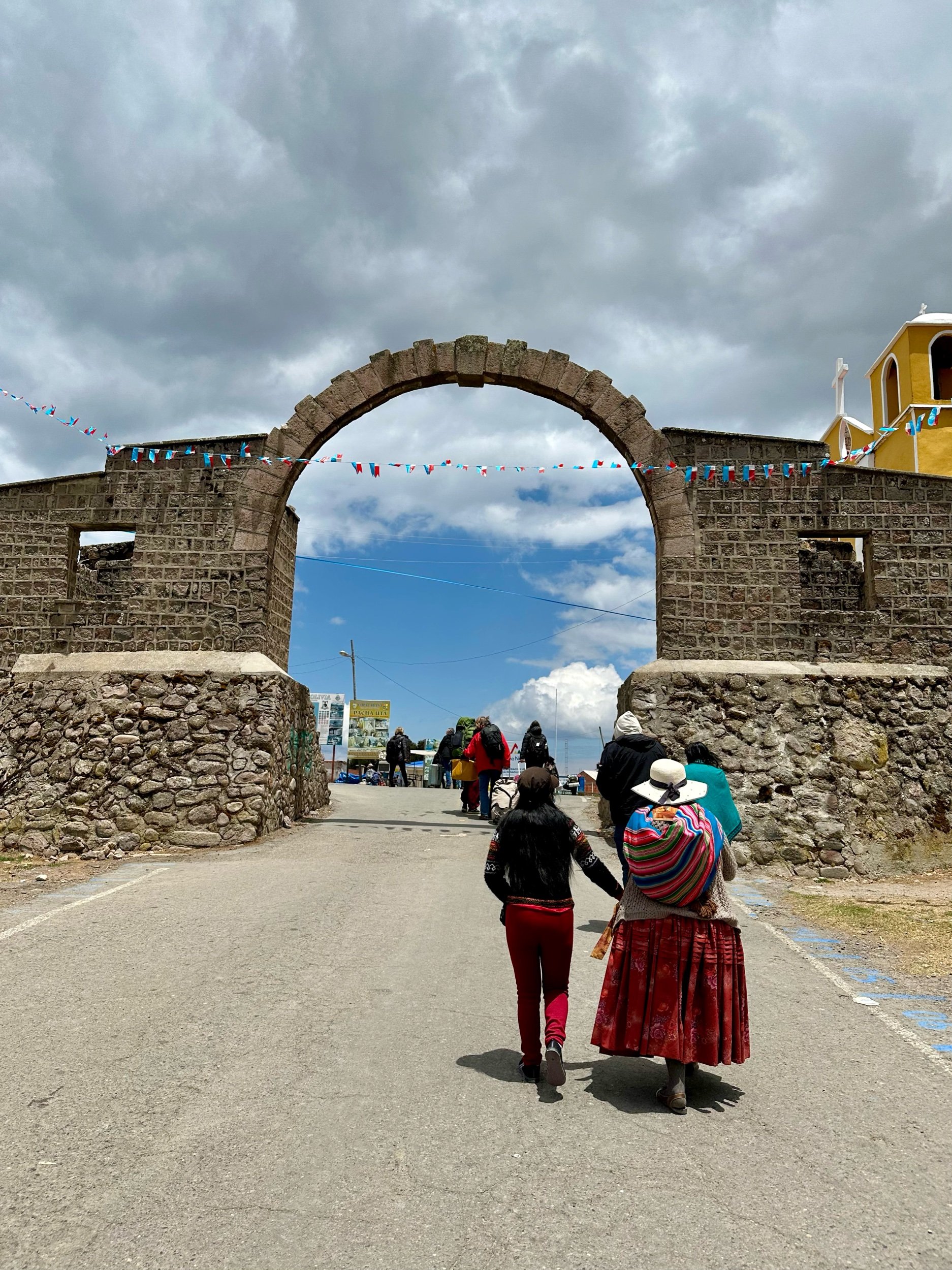
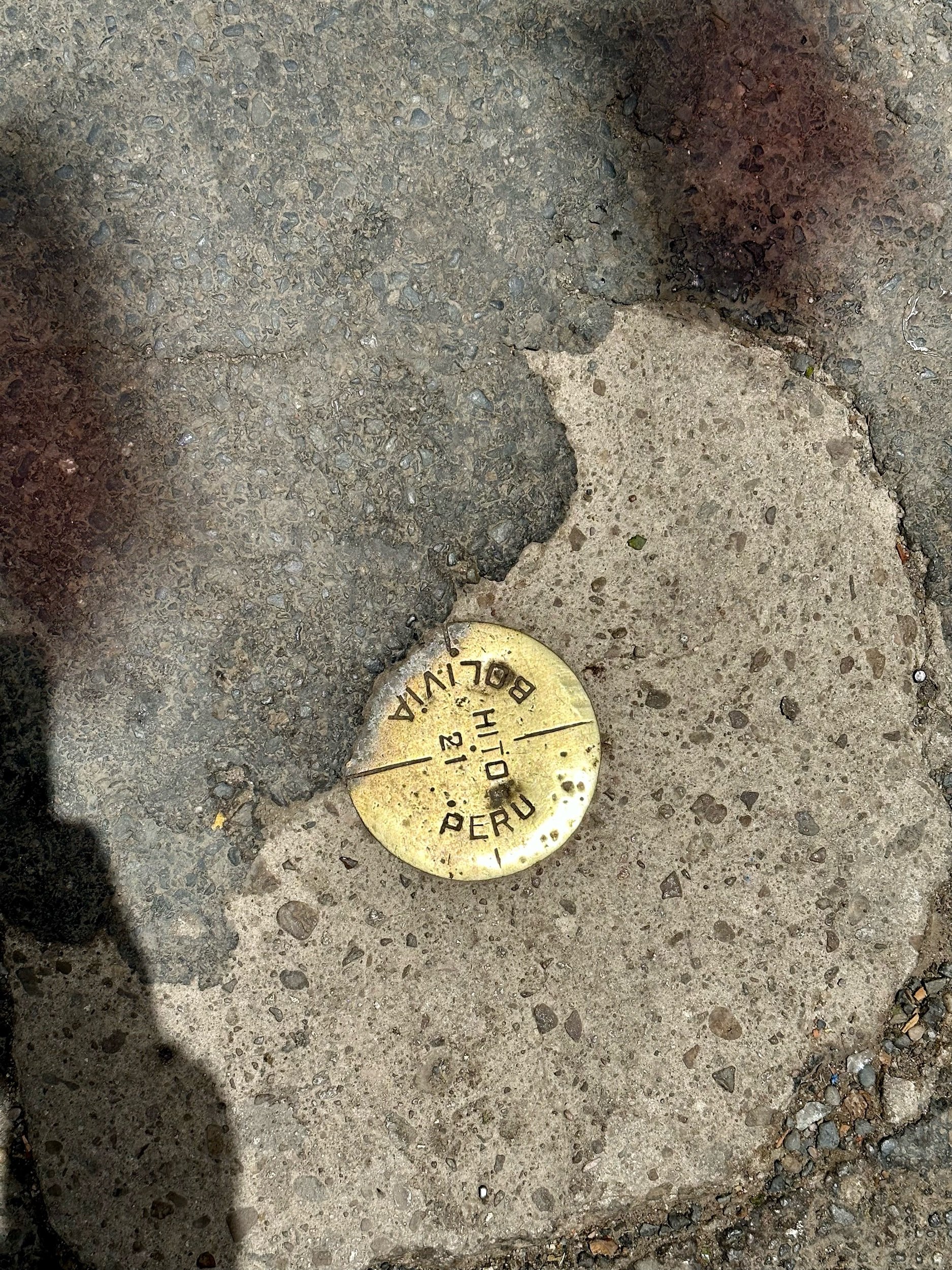
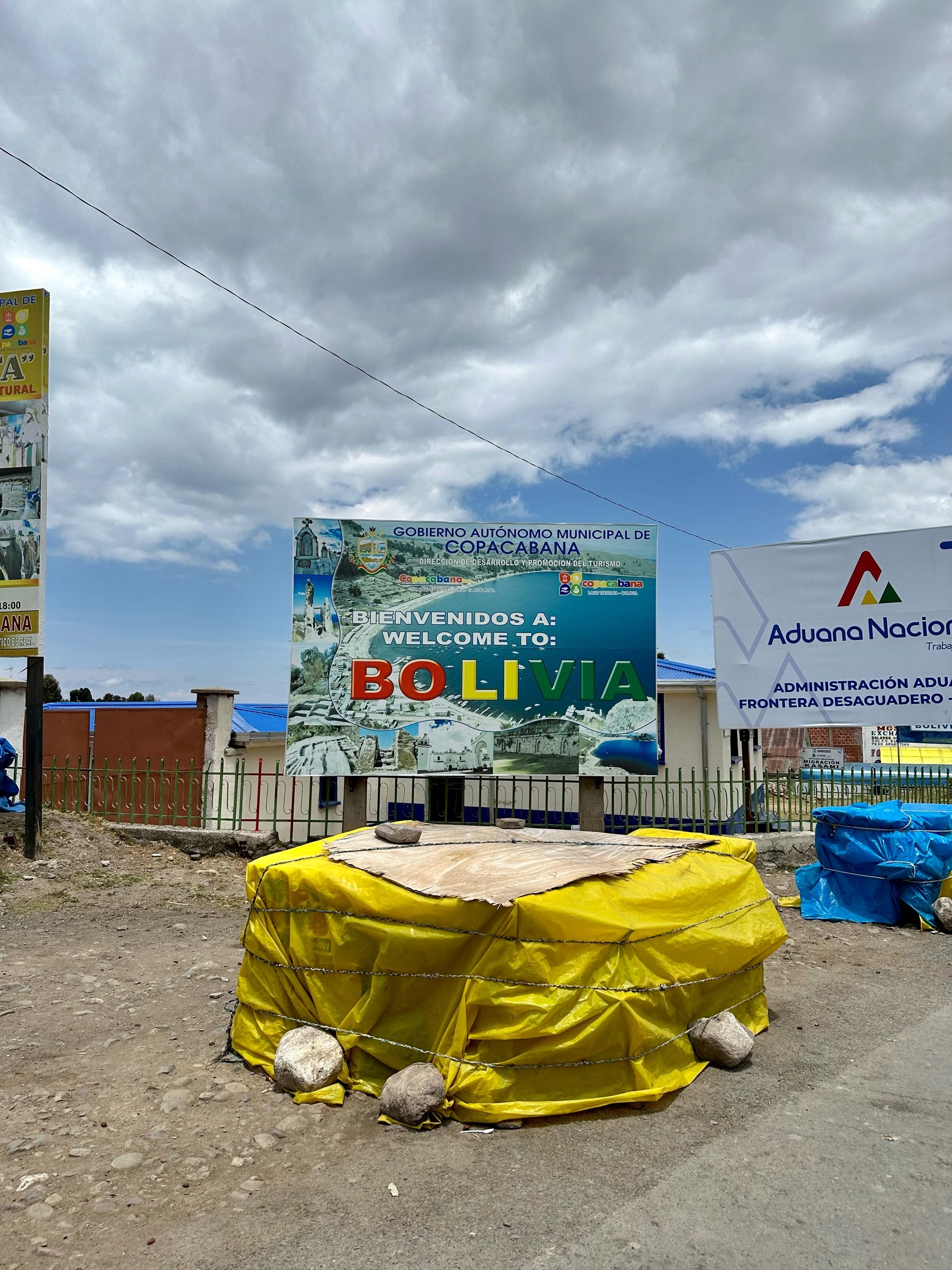
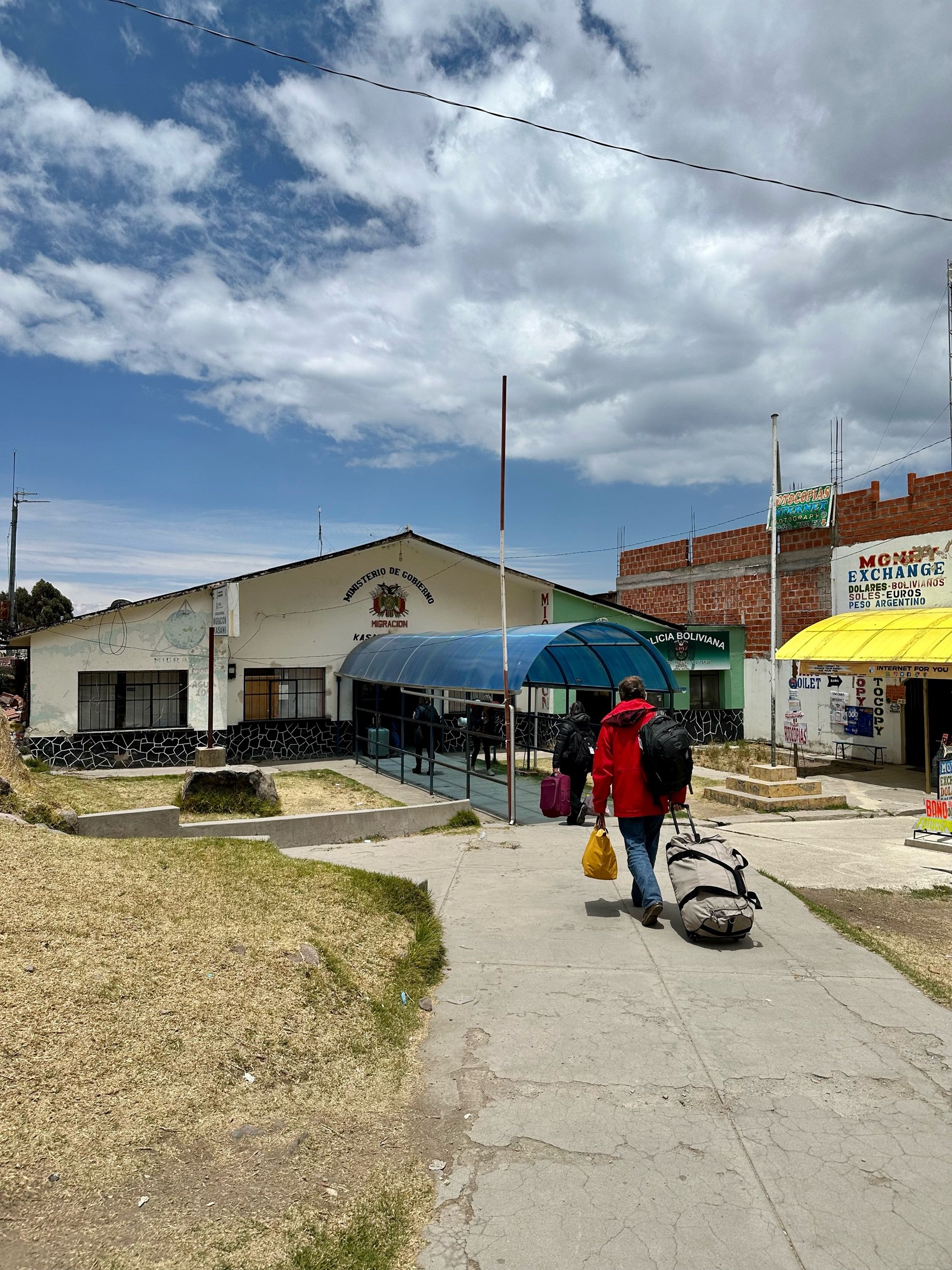
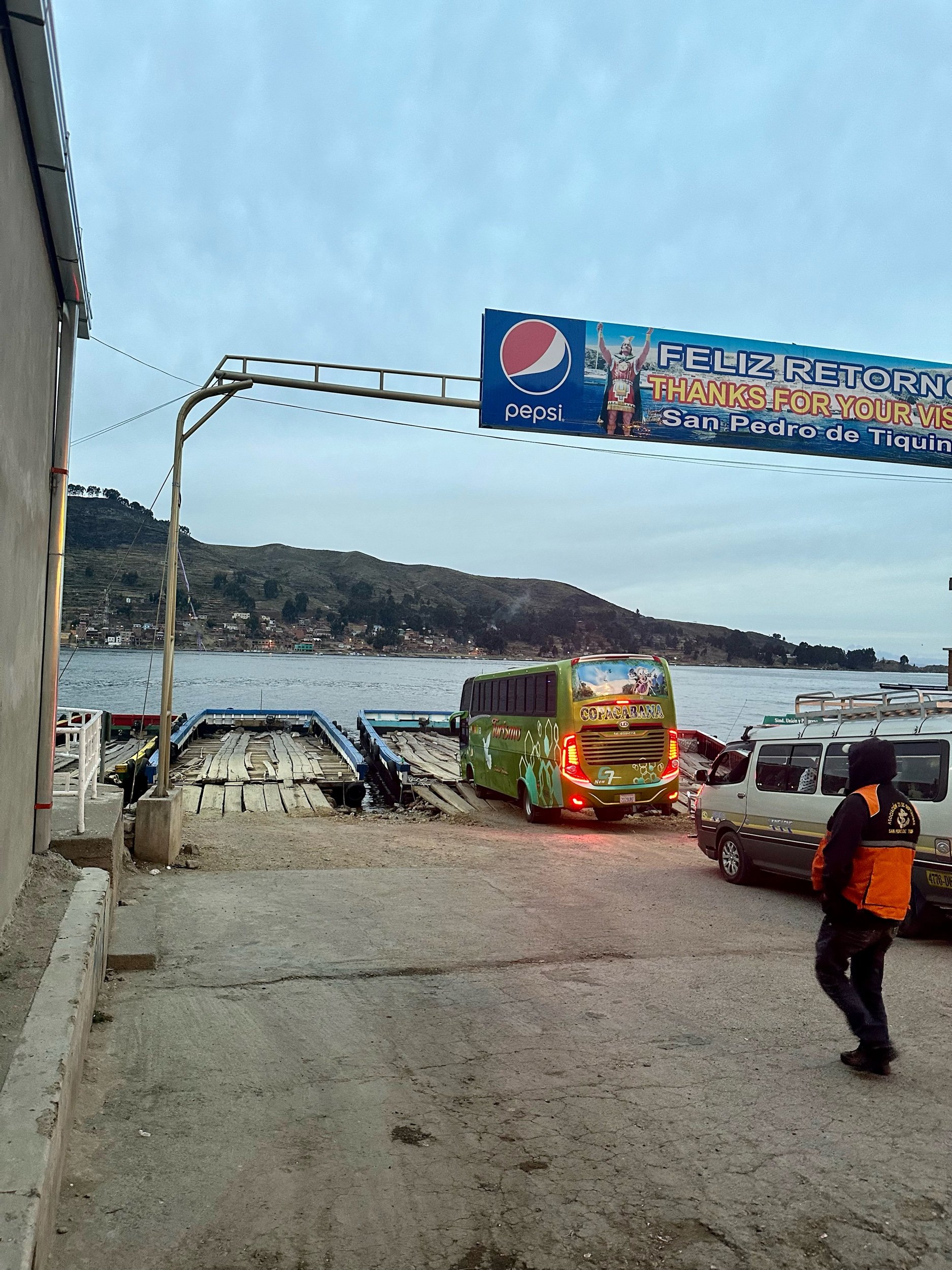
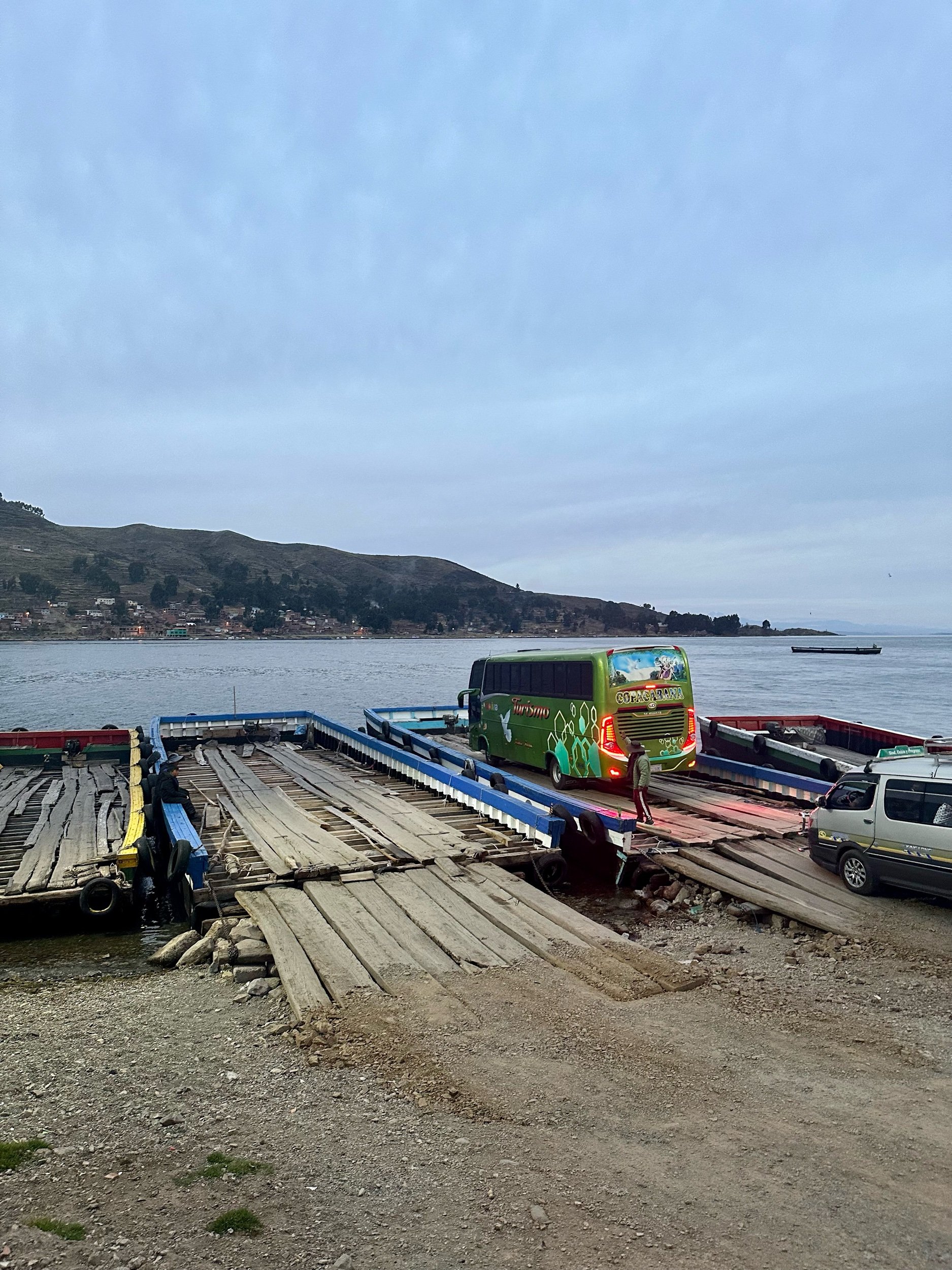


We finally made it to our afternoon bus layover in the city of Copacabana. We ate lunch at Copacabana before getting on a boat to the Isla del Sol, an island on the lake where Incas have lived for centuries and the locals still inhabit today living out their traditional way of life. The Incas believed this is where the sun was born and was a very important island! There were some beautiful views of the lake and surrounding mountains. It wasn’t until we got to Isla del Sol that we really were able to appreciate the size and scale of Lake Titicaca itself. We were only able to walk the southern portion of the island but really enjoyed our time there! We made it back to Copacabana to continue our journey to La Paz (as described above!) by bus & boat. We definitely learned a lot about the resiliency of the communities living on and around Lake Titicaca and are thankful for our time here!
